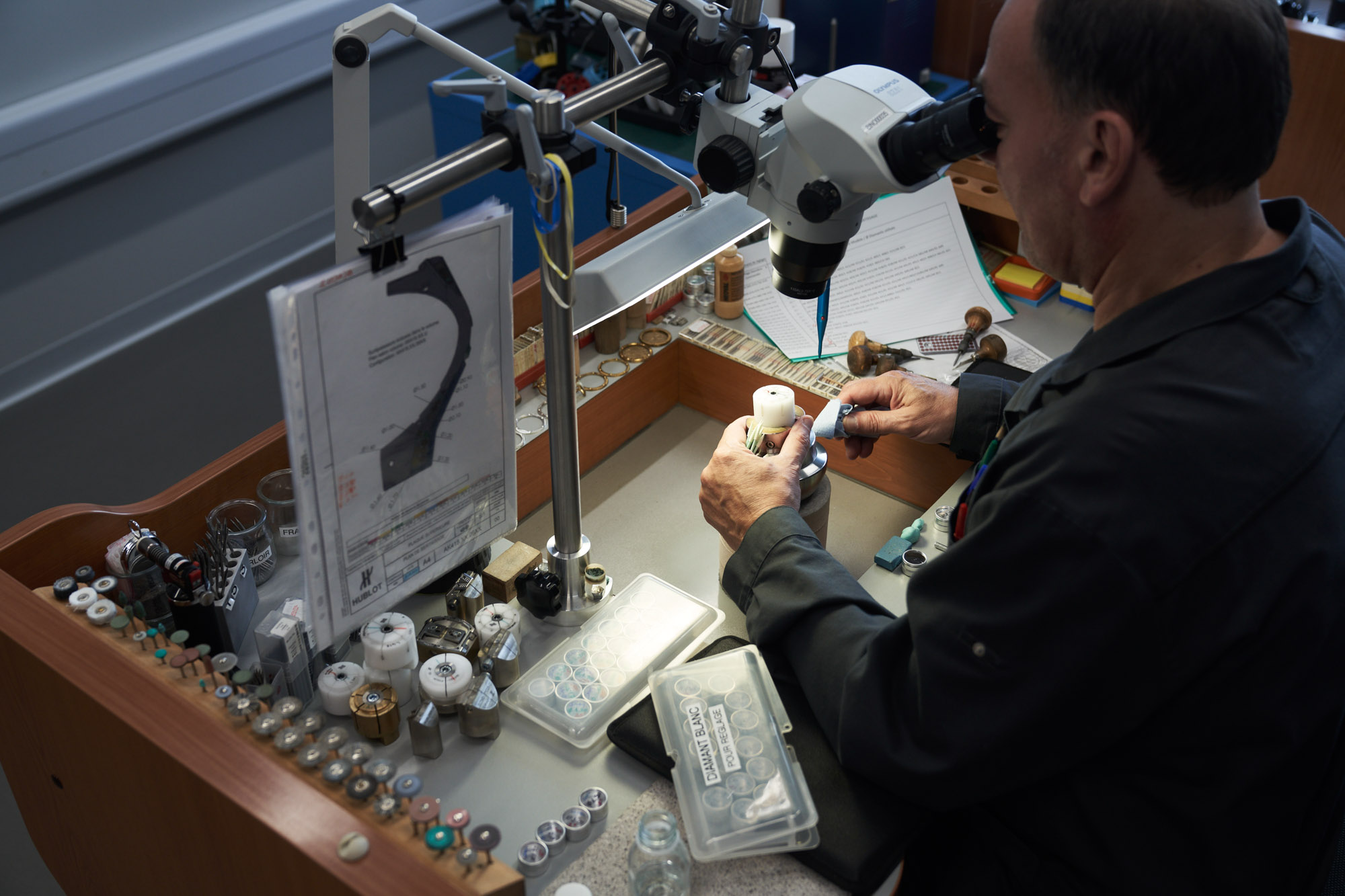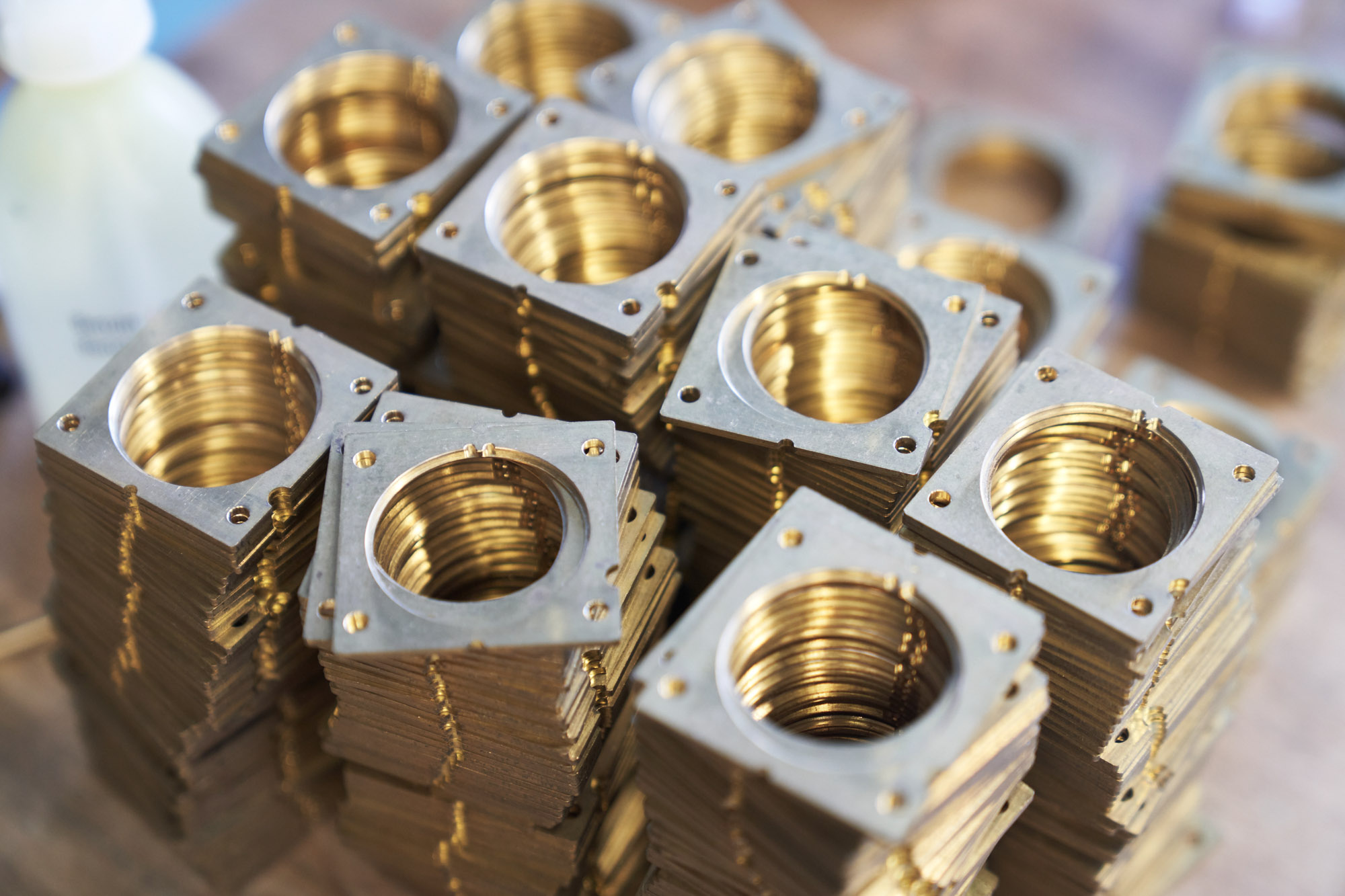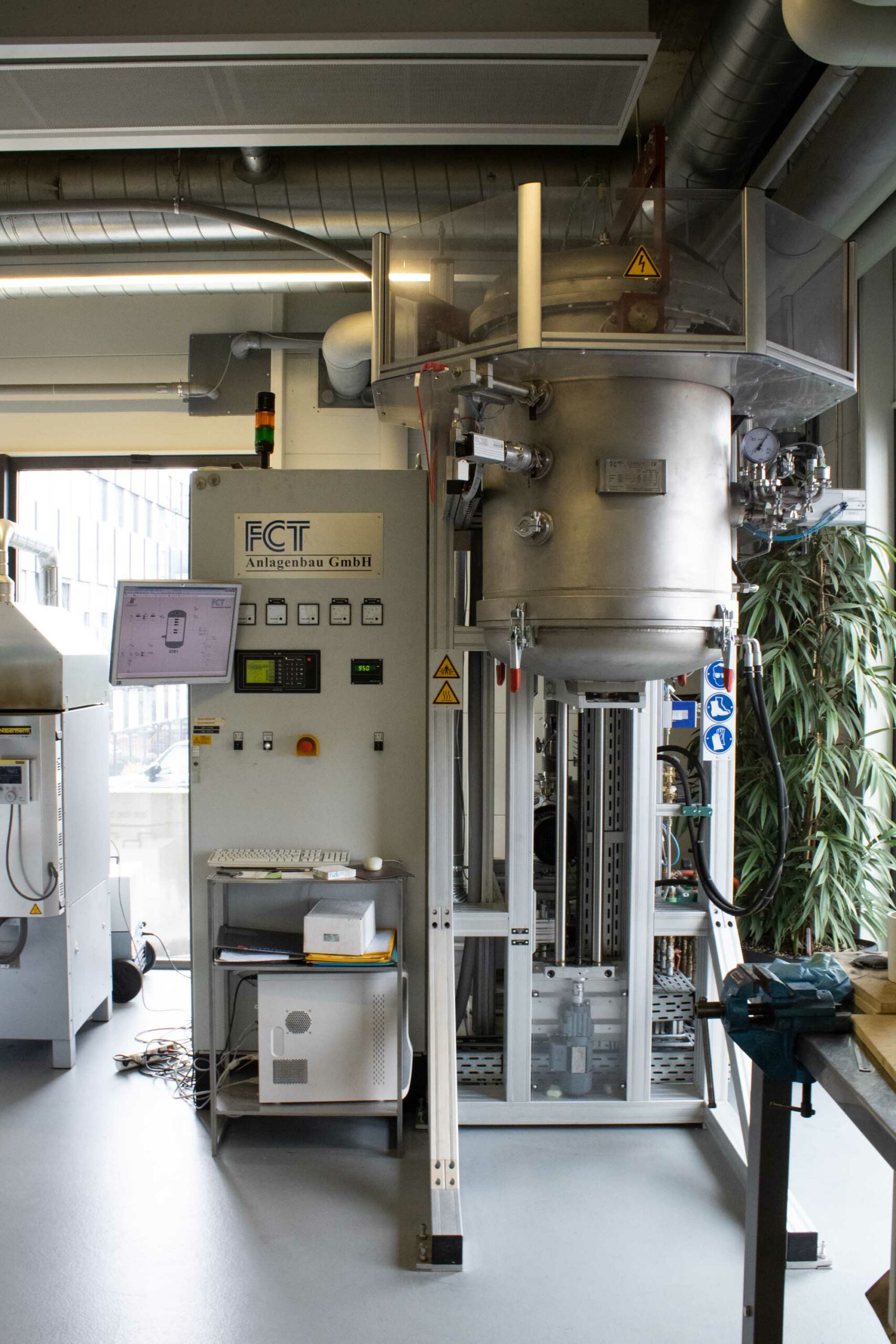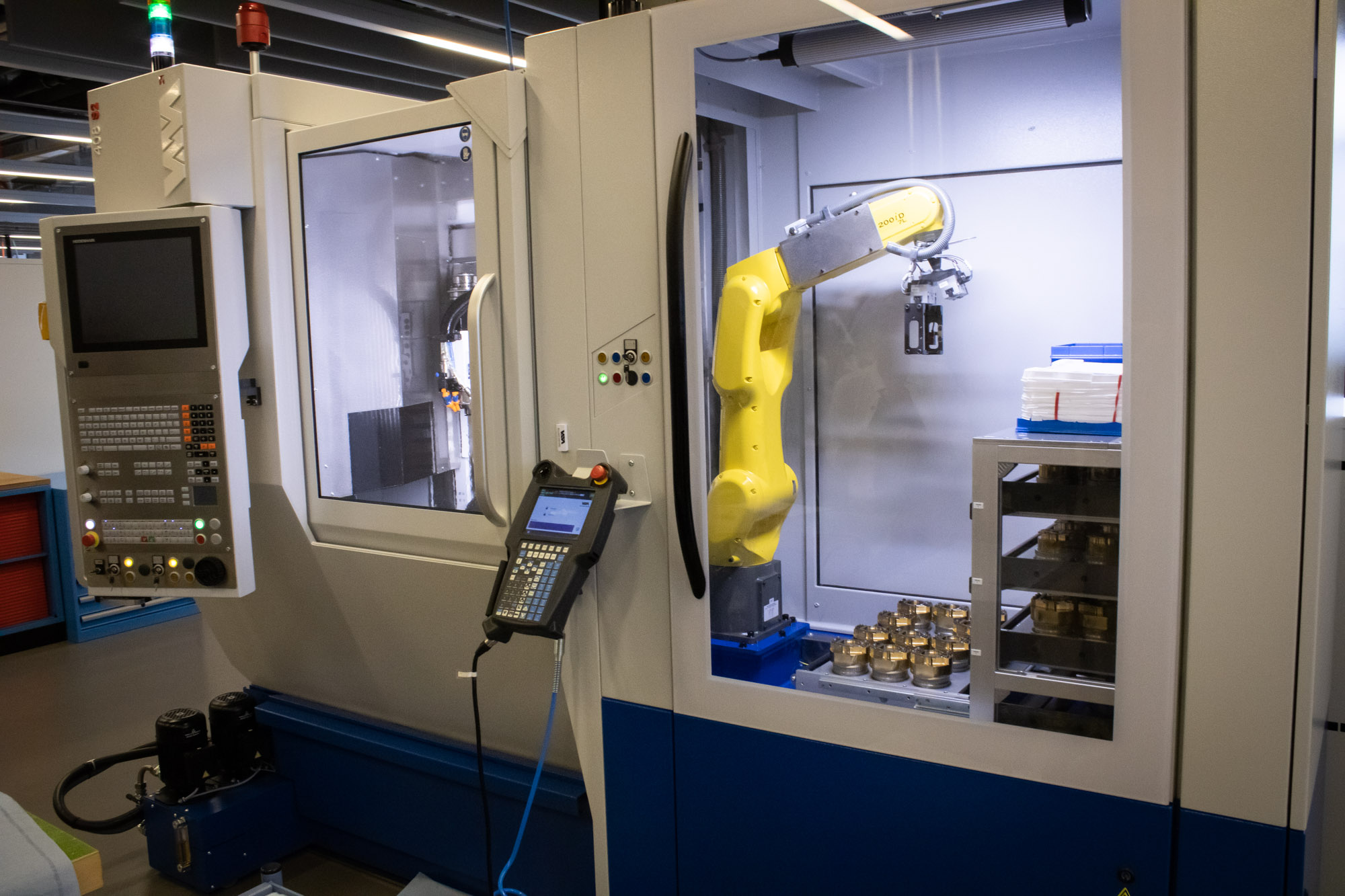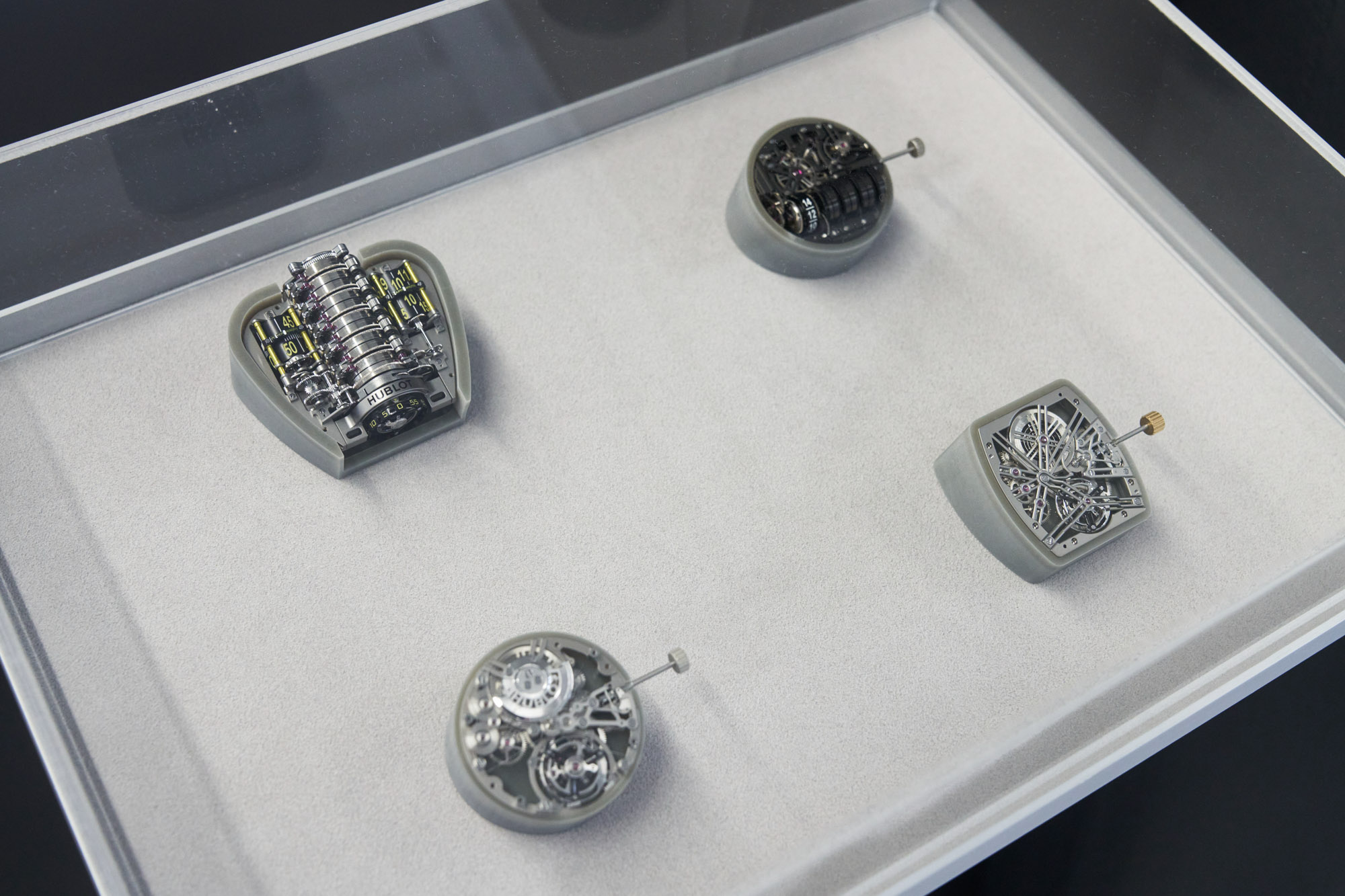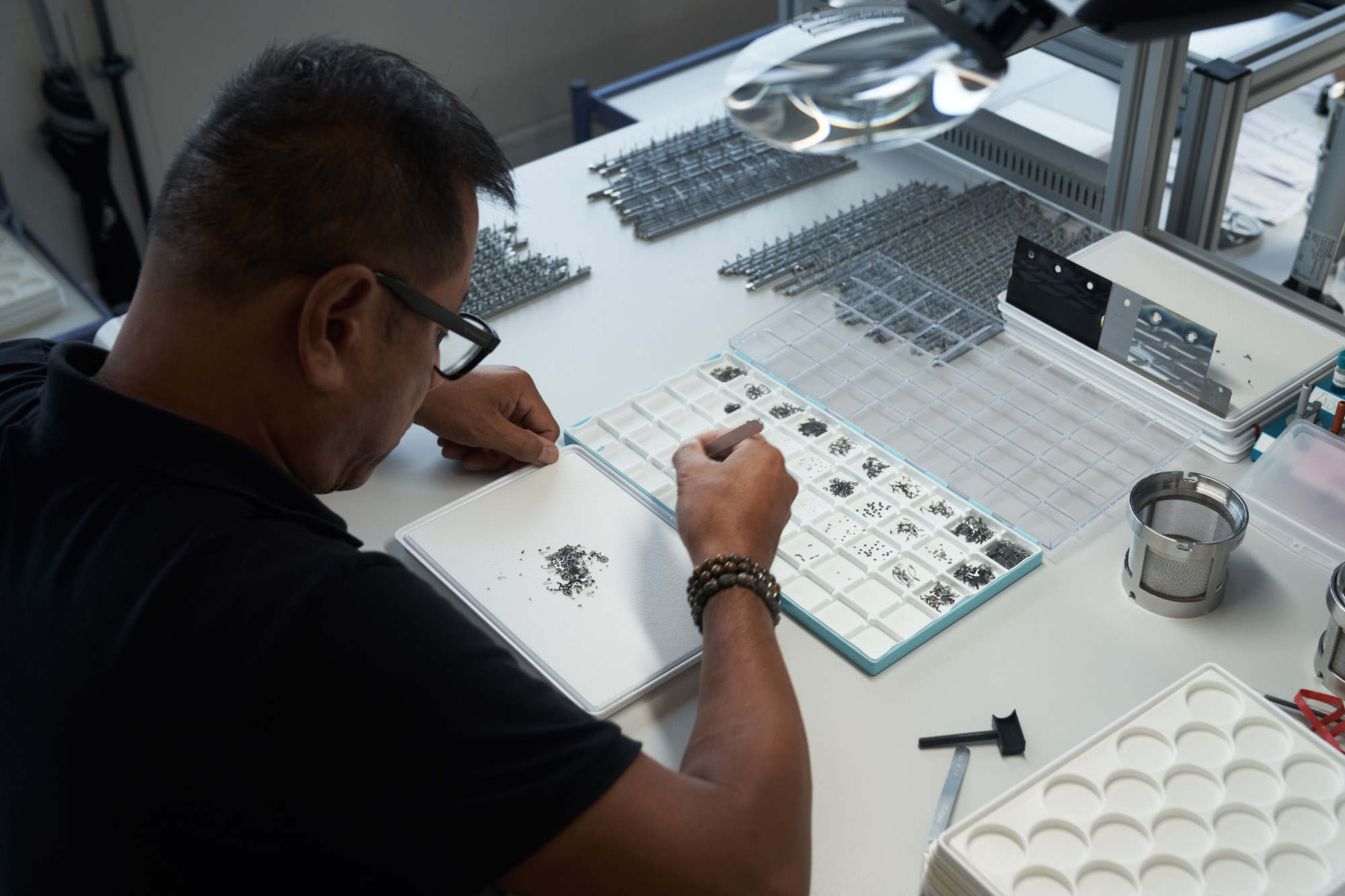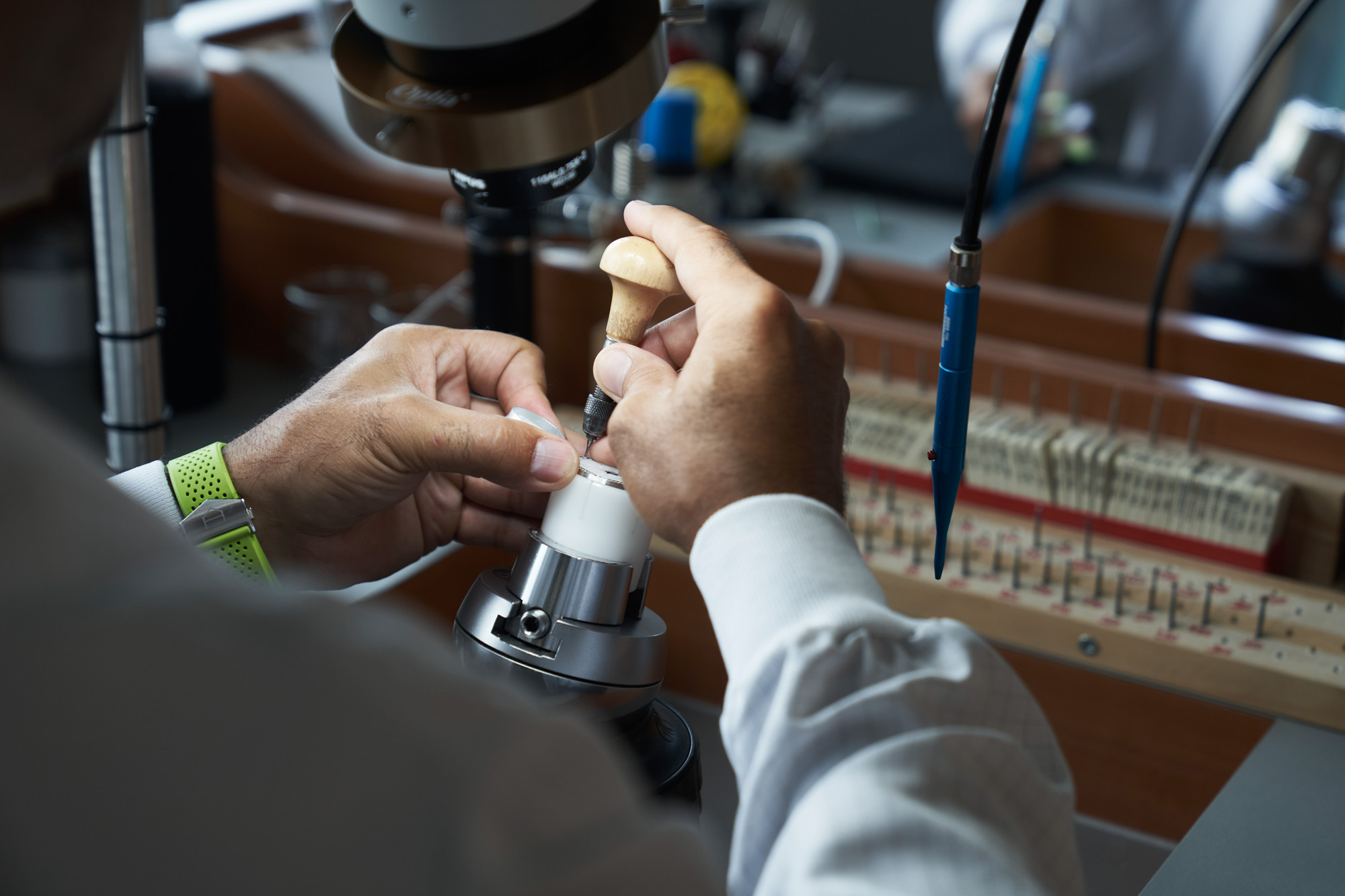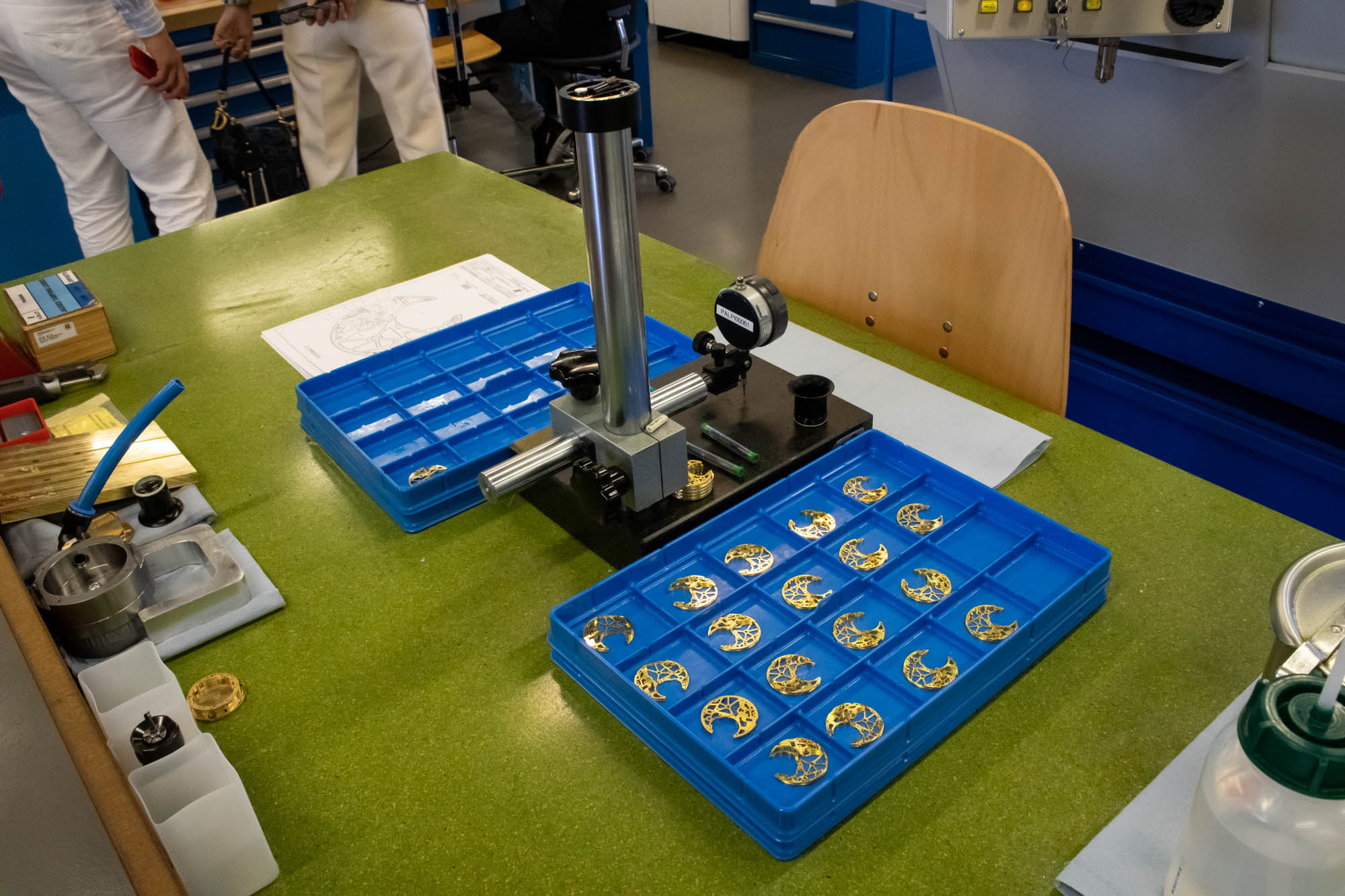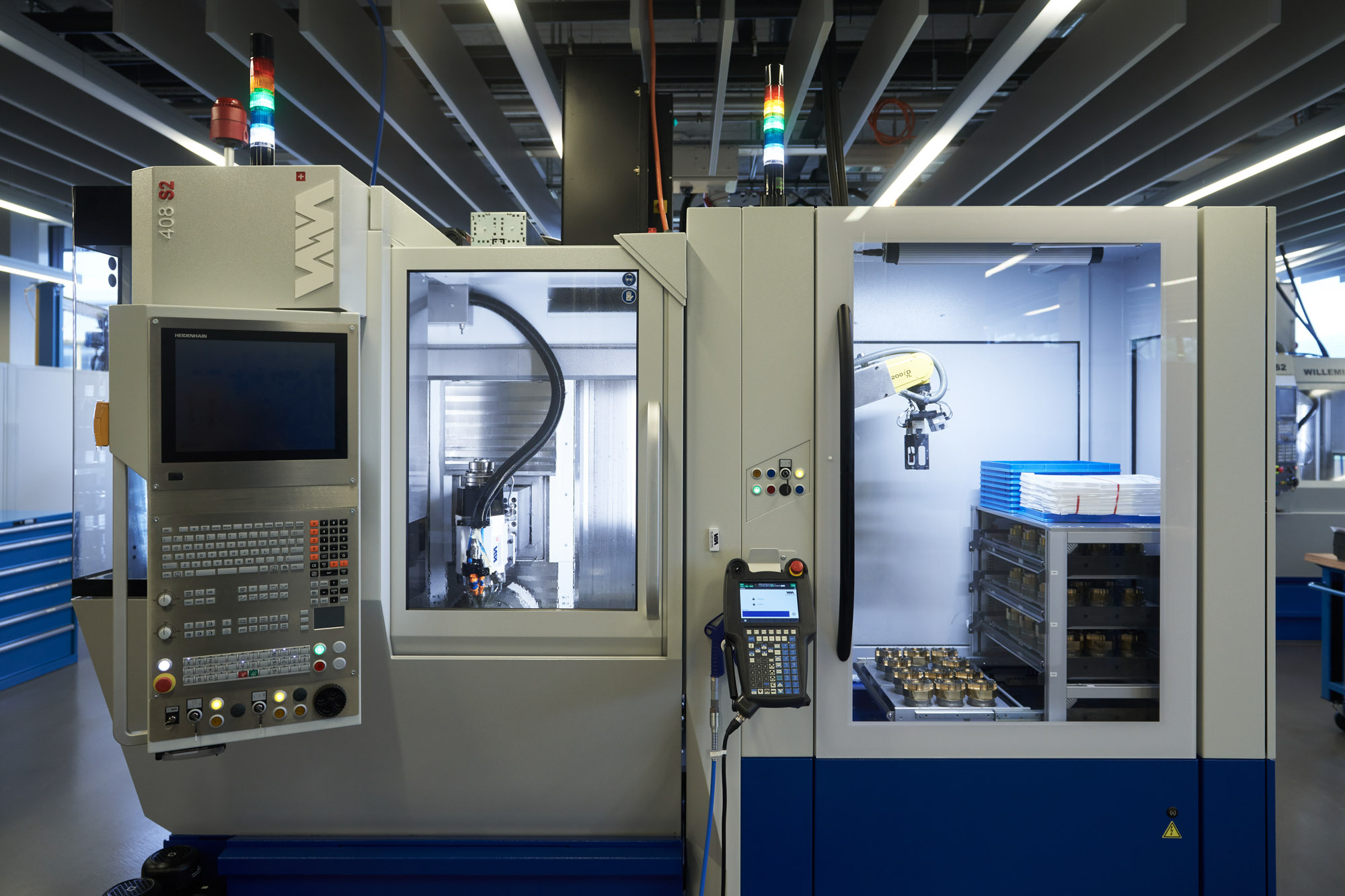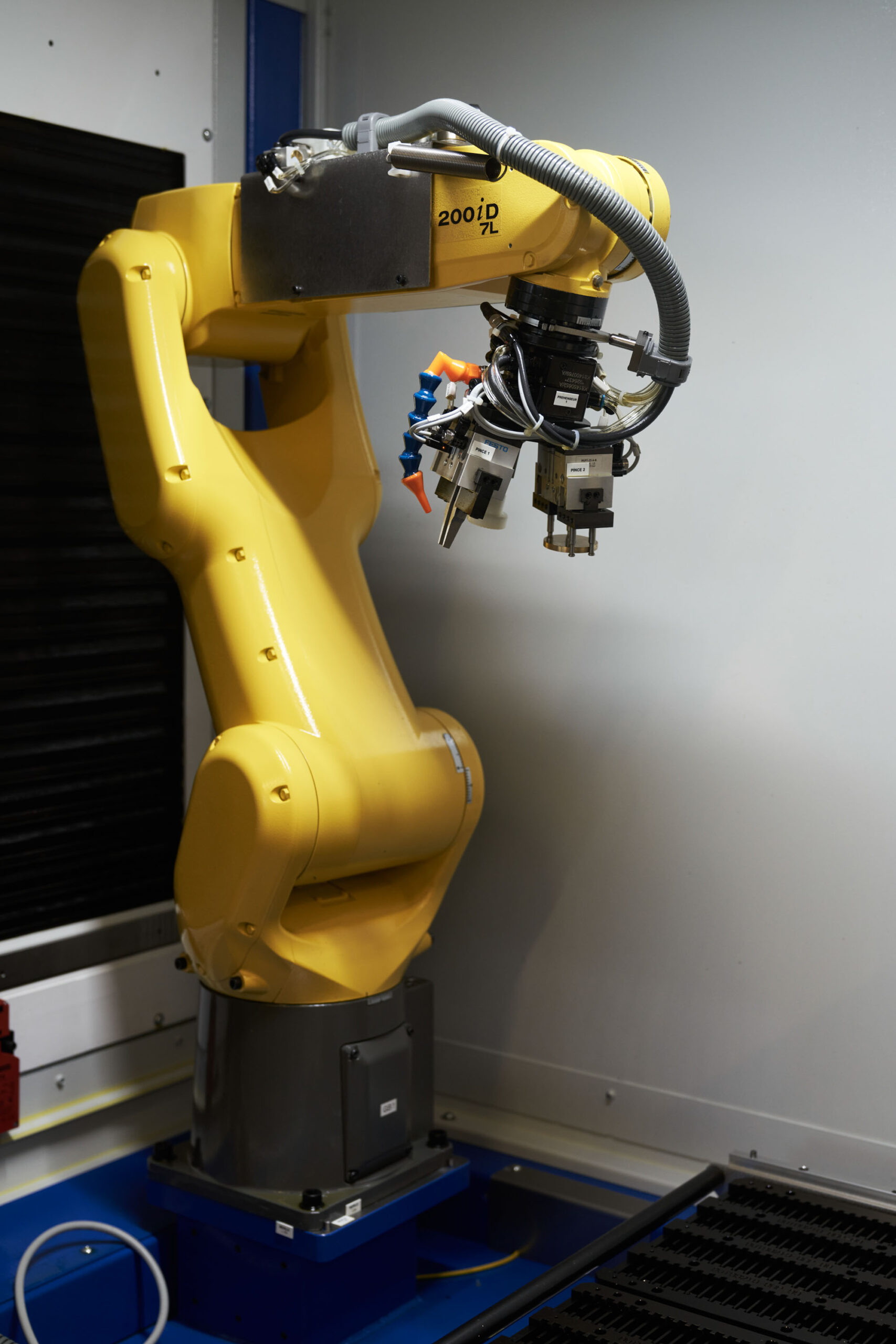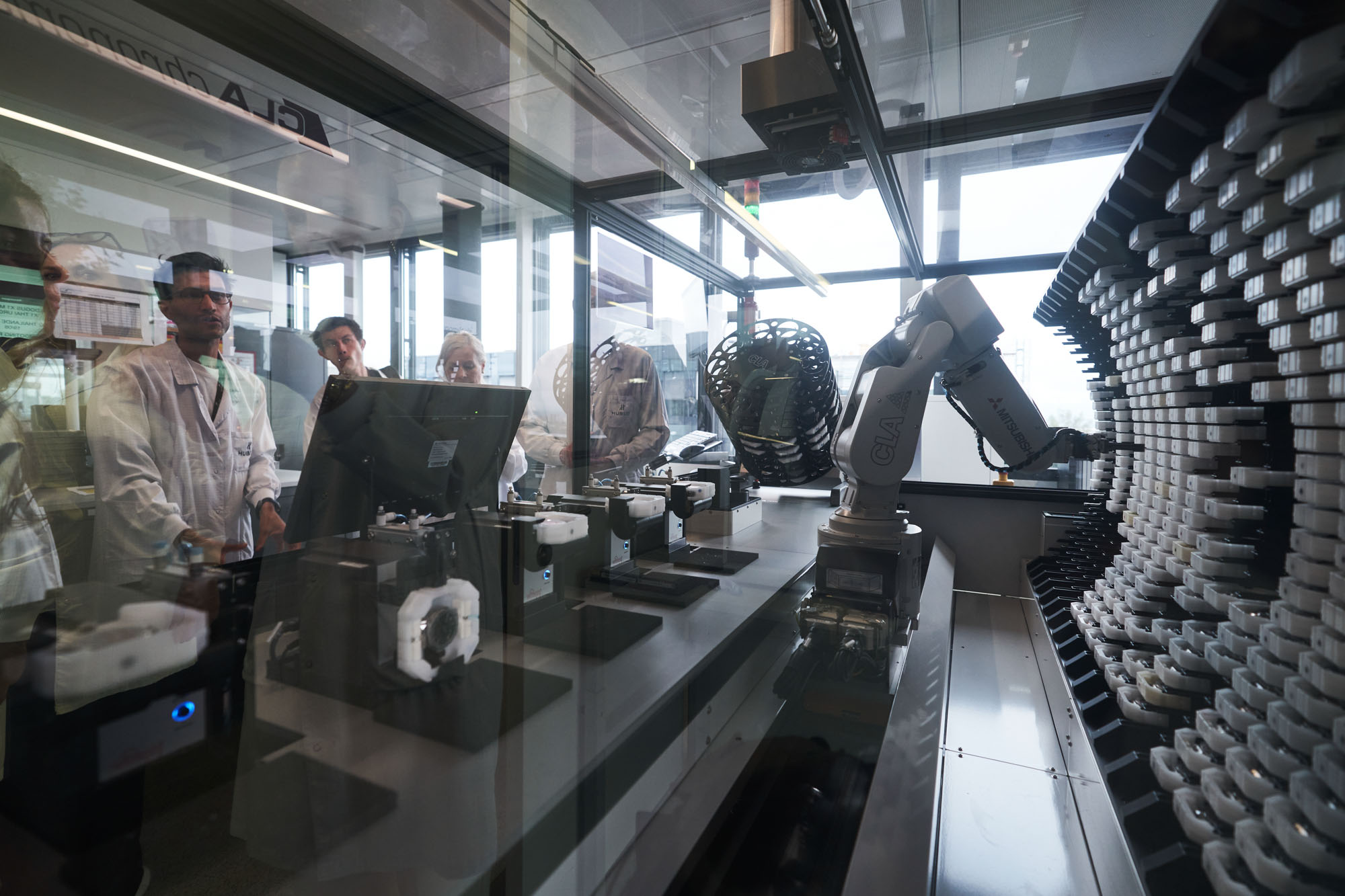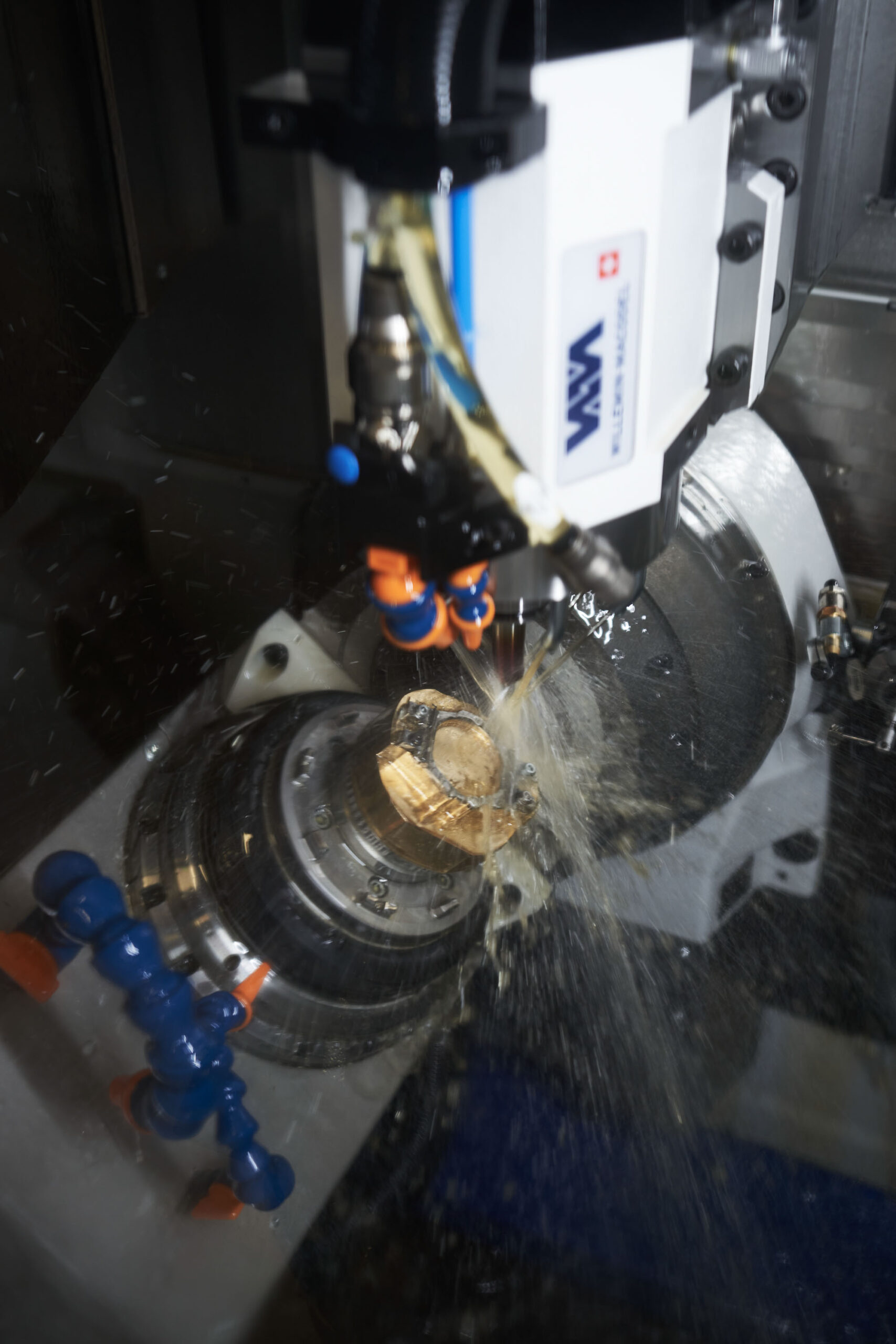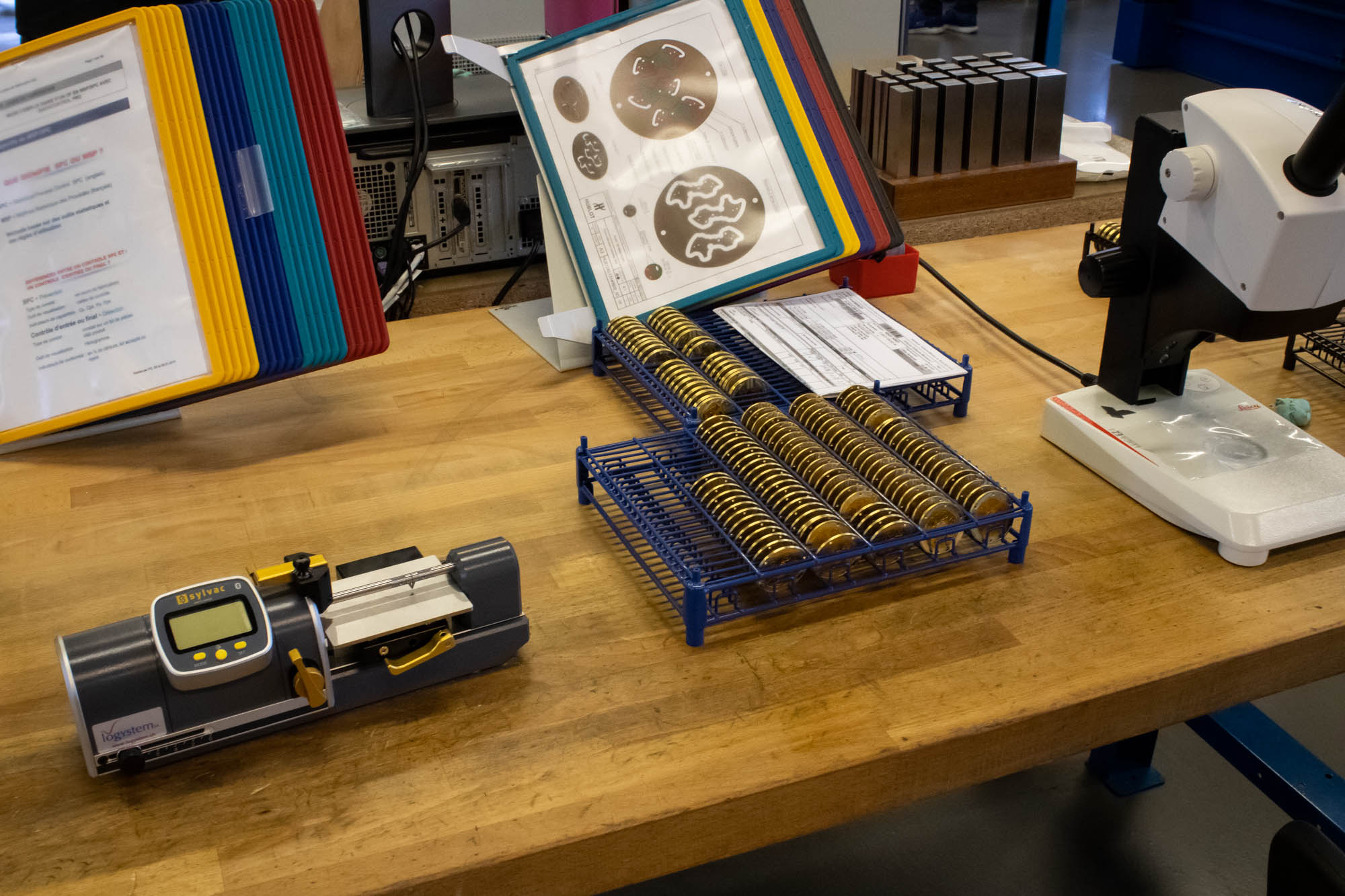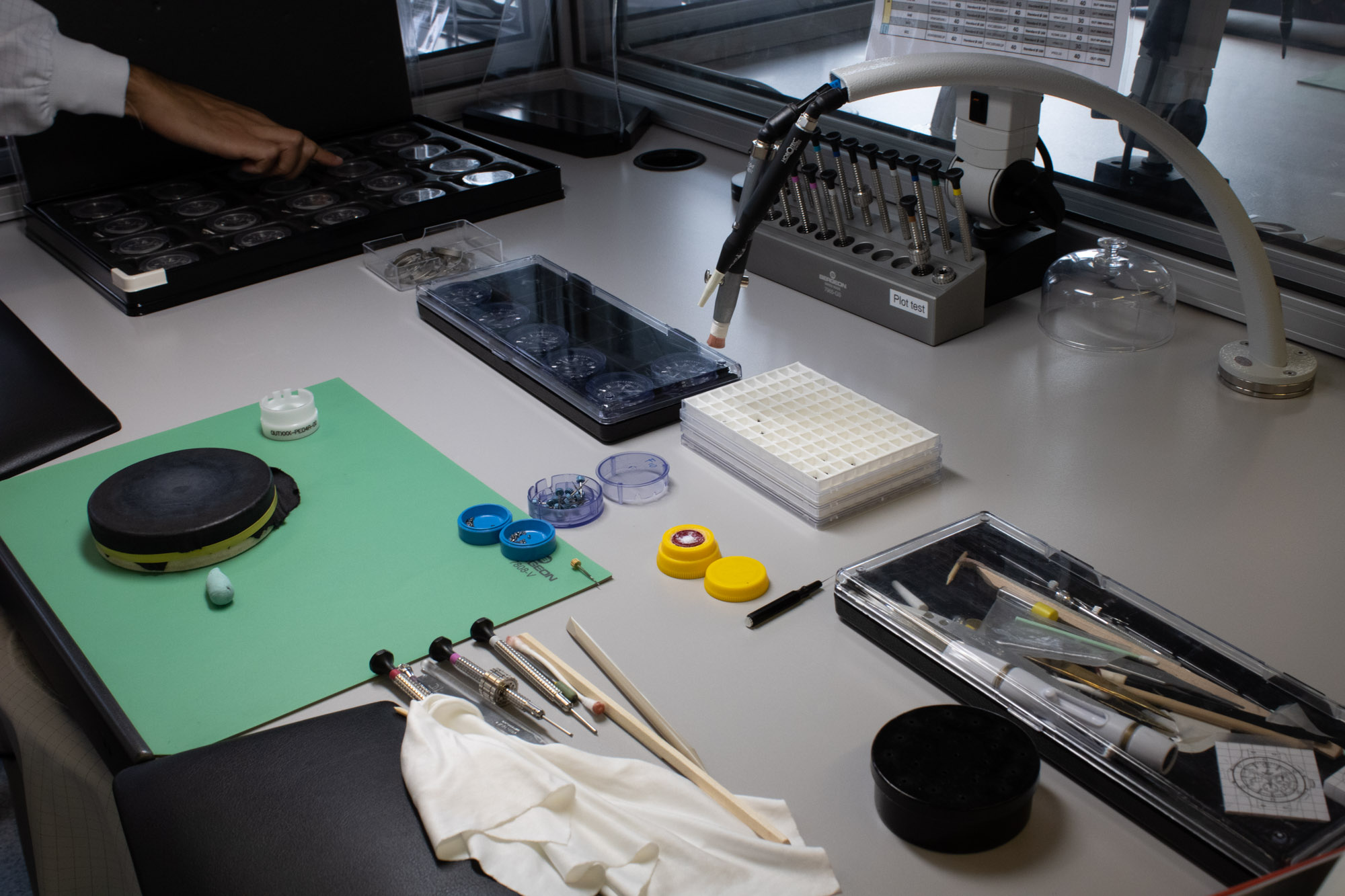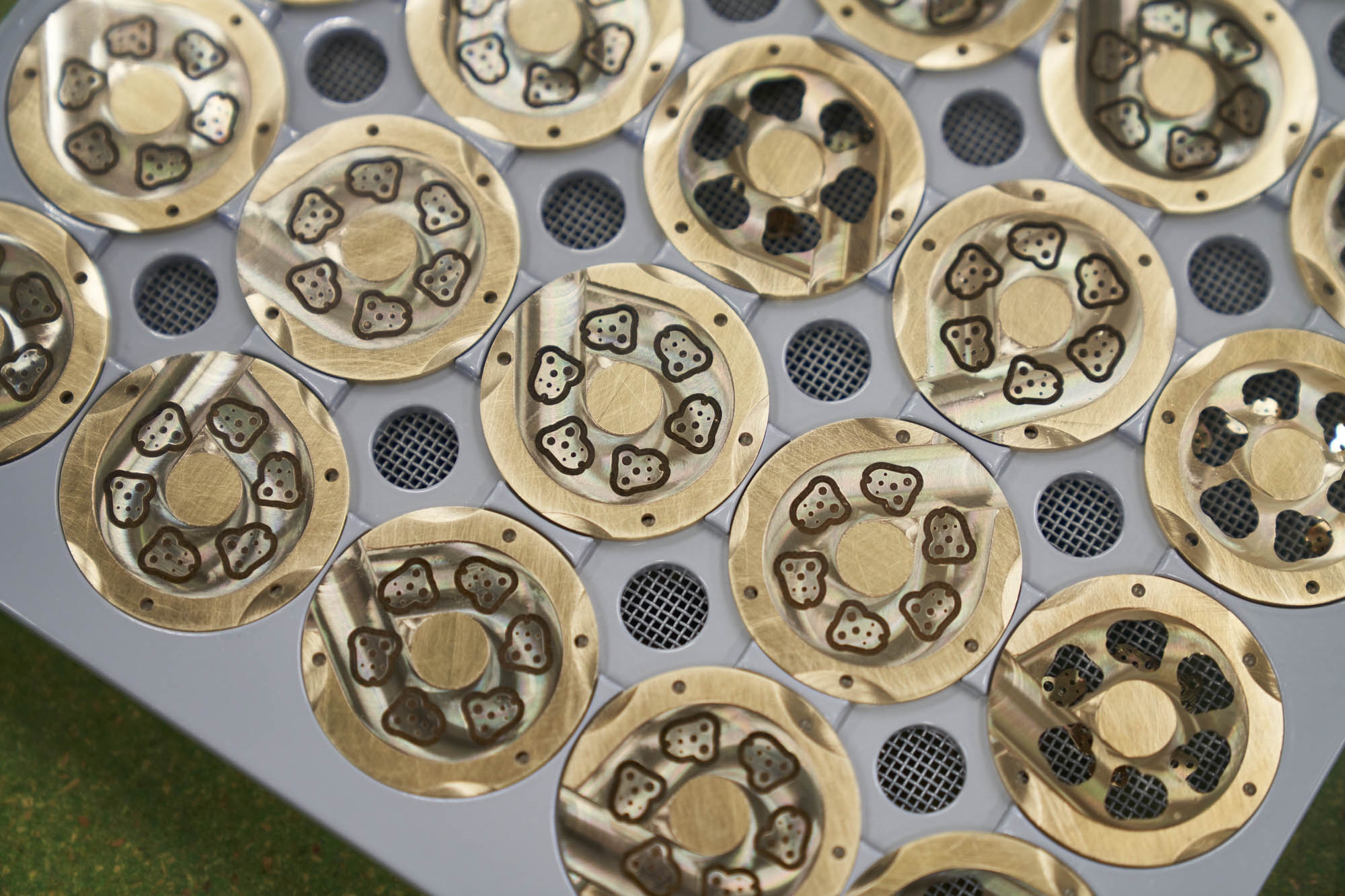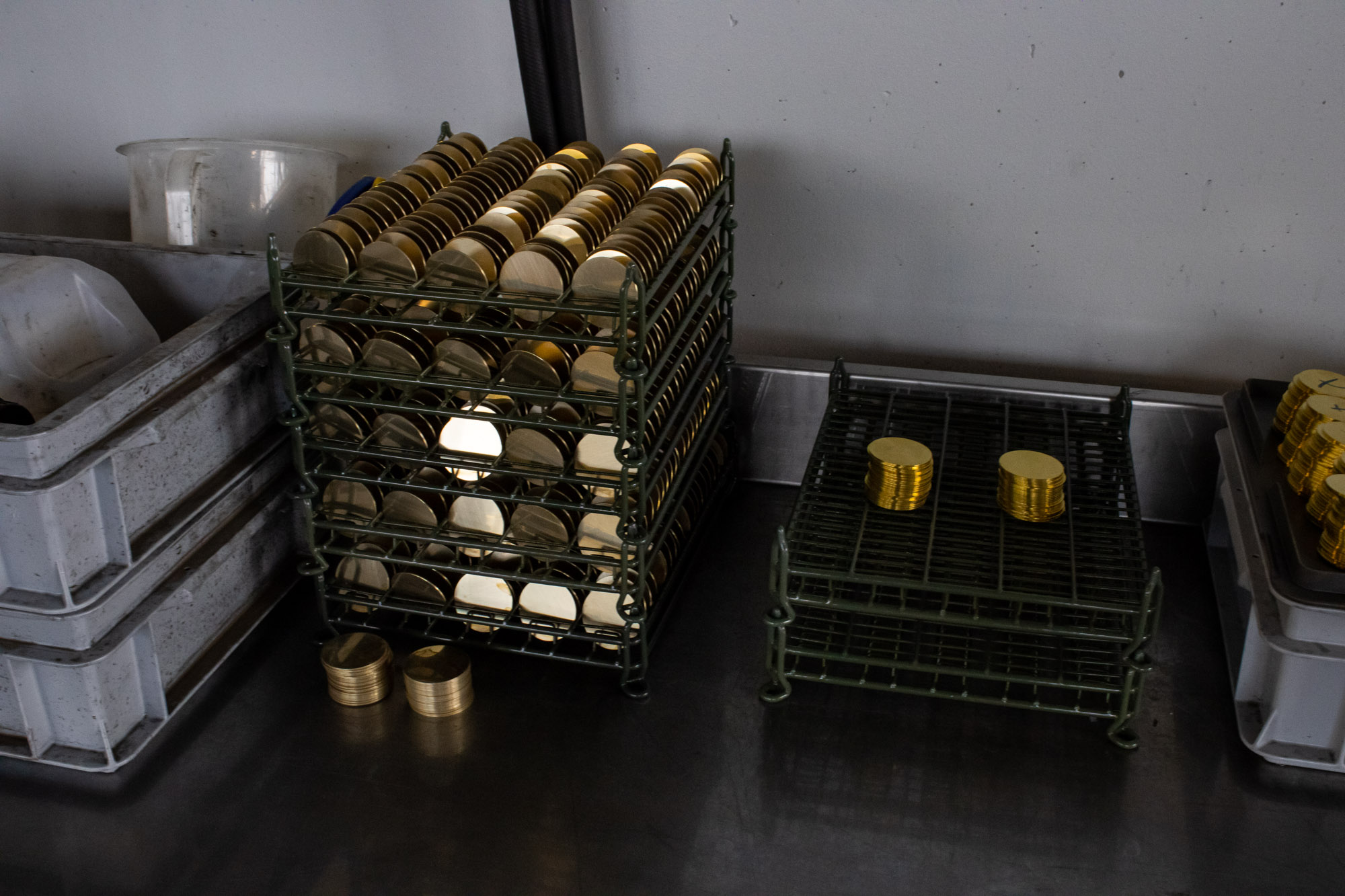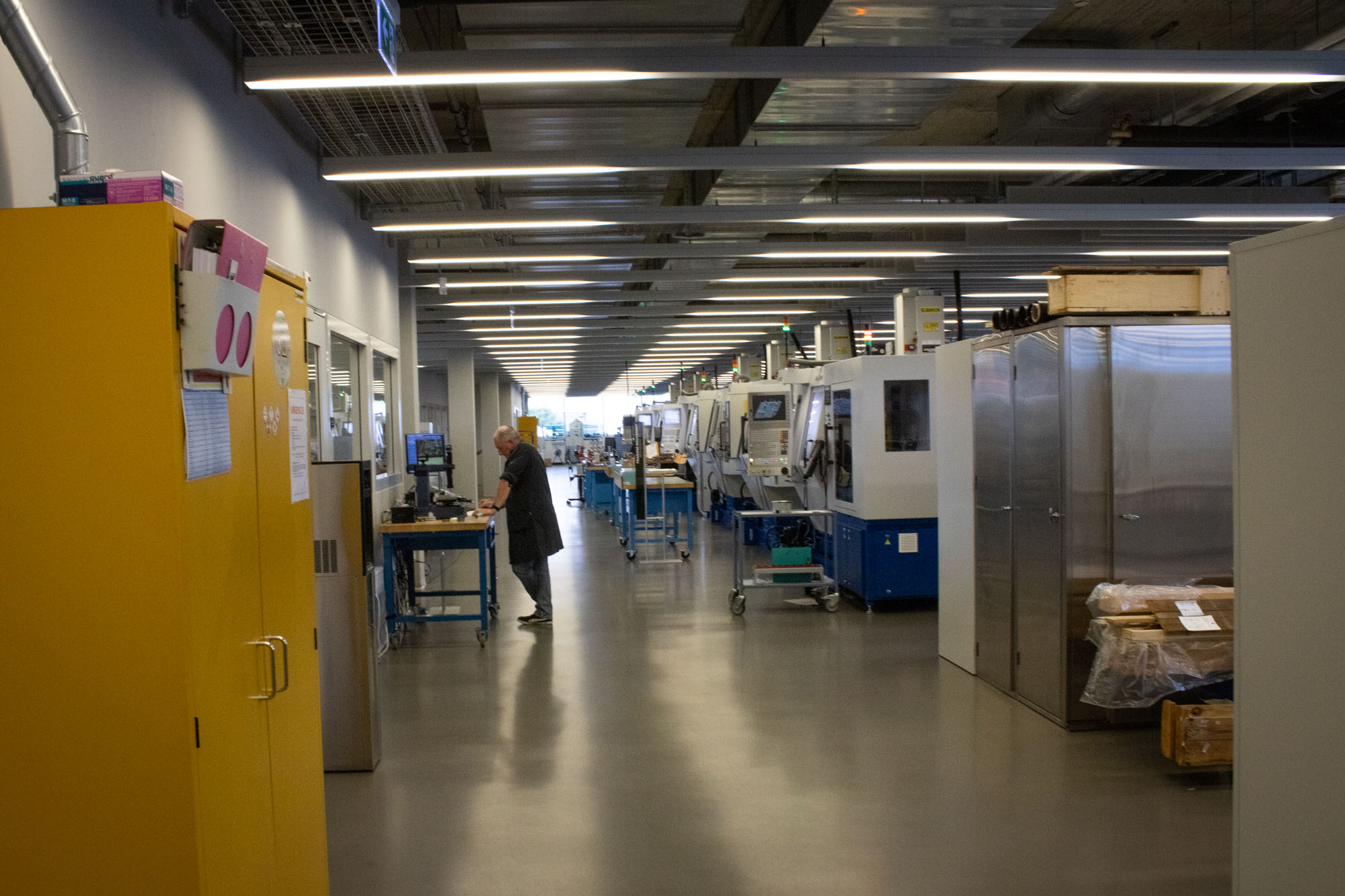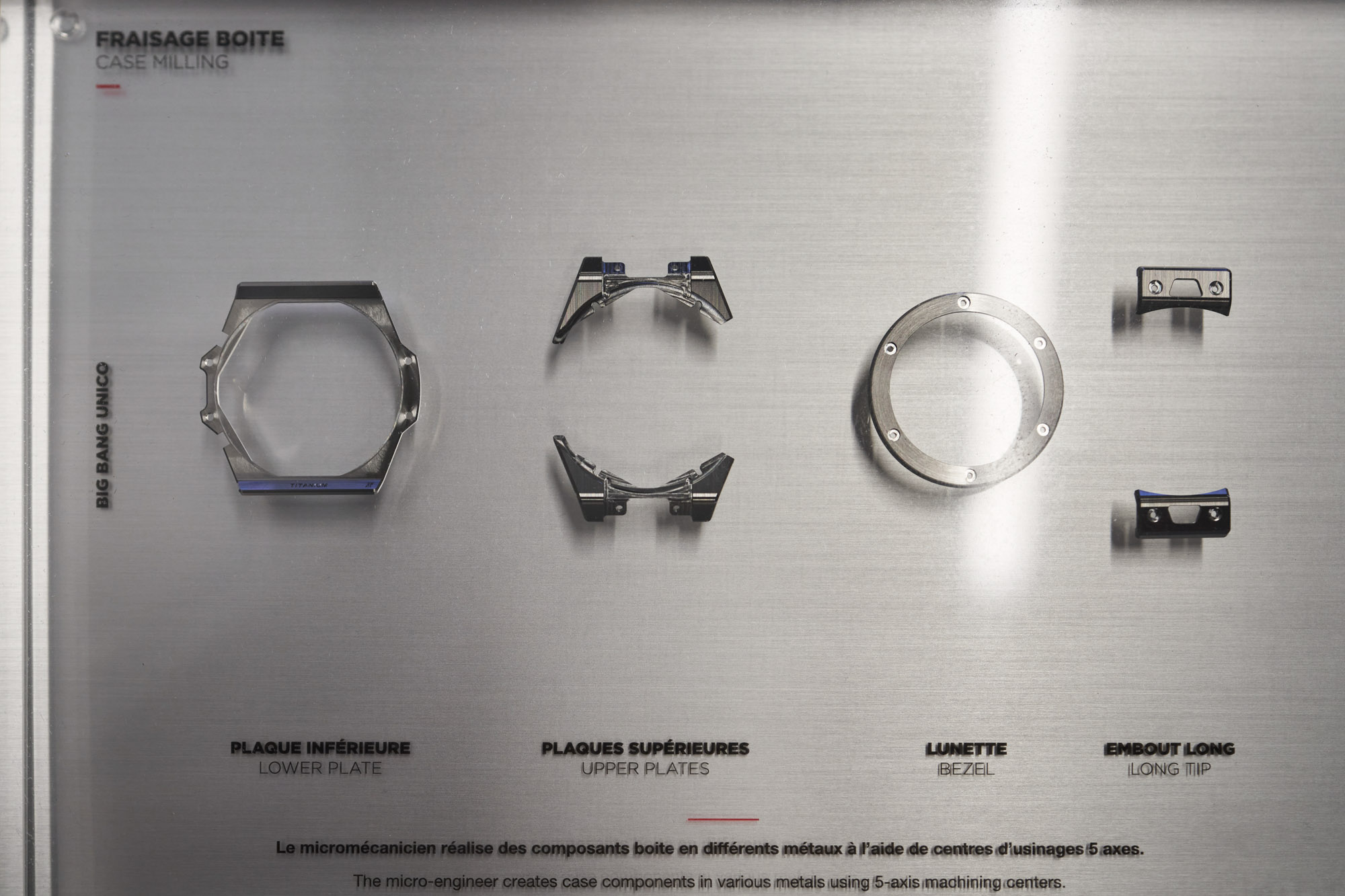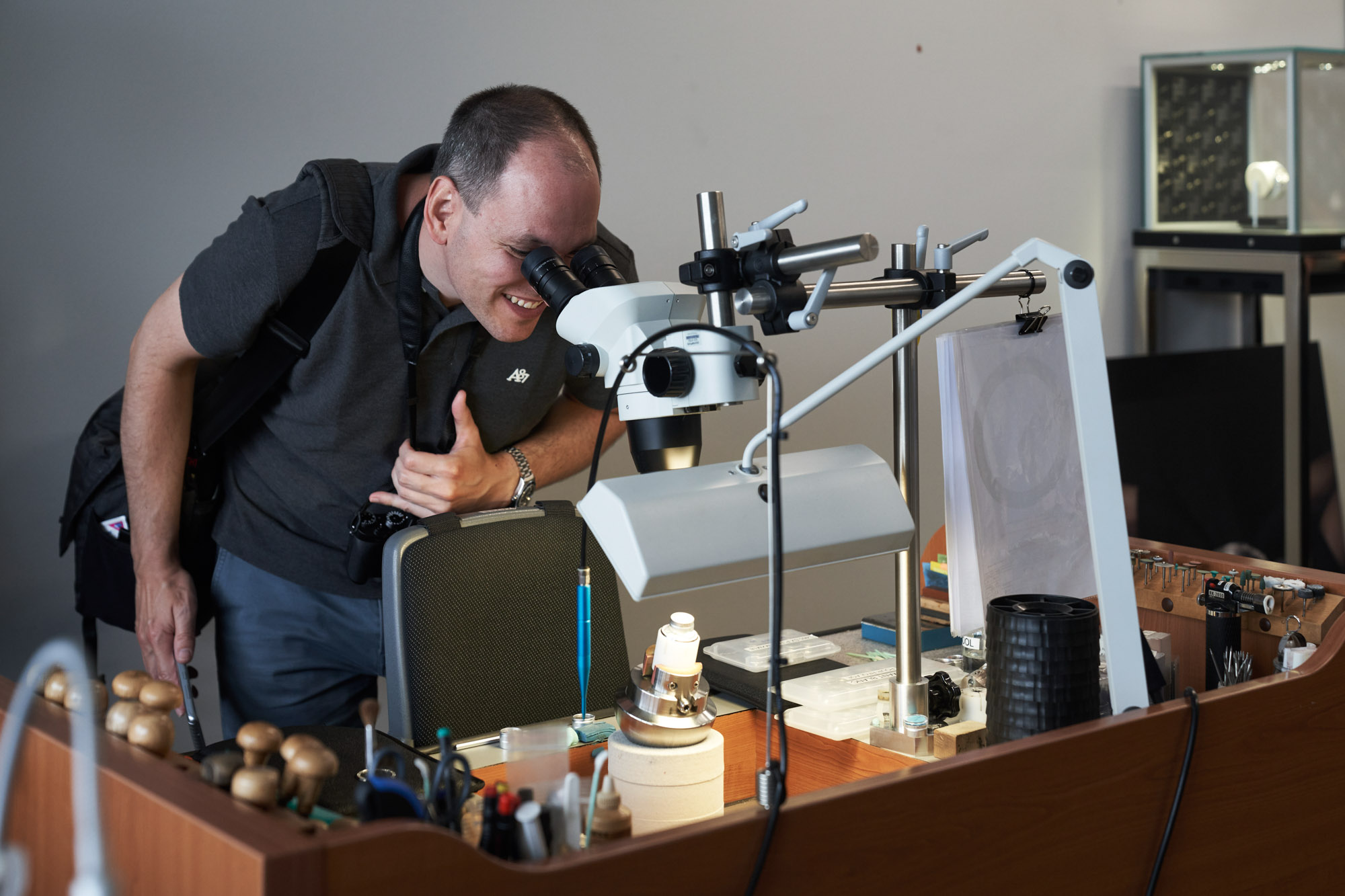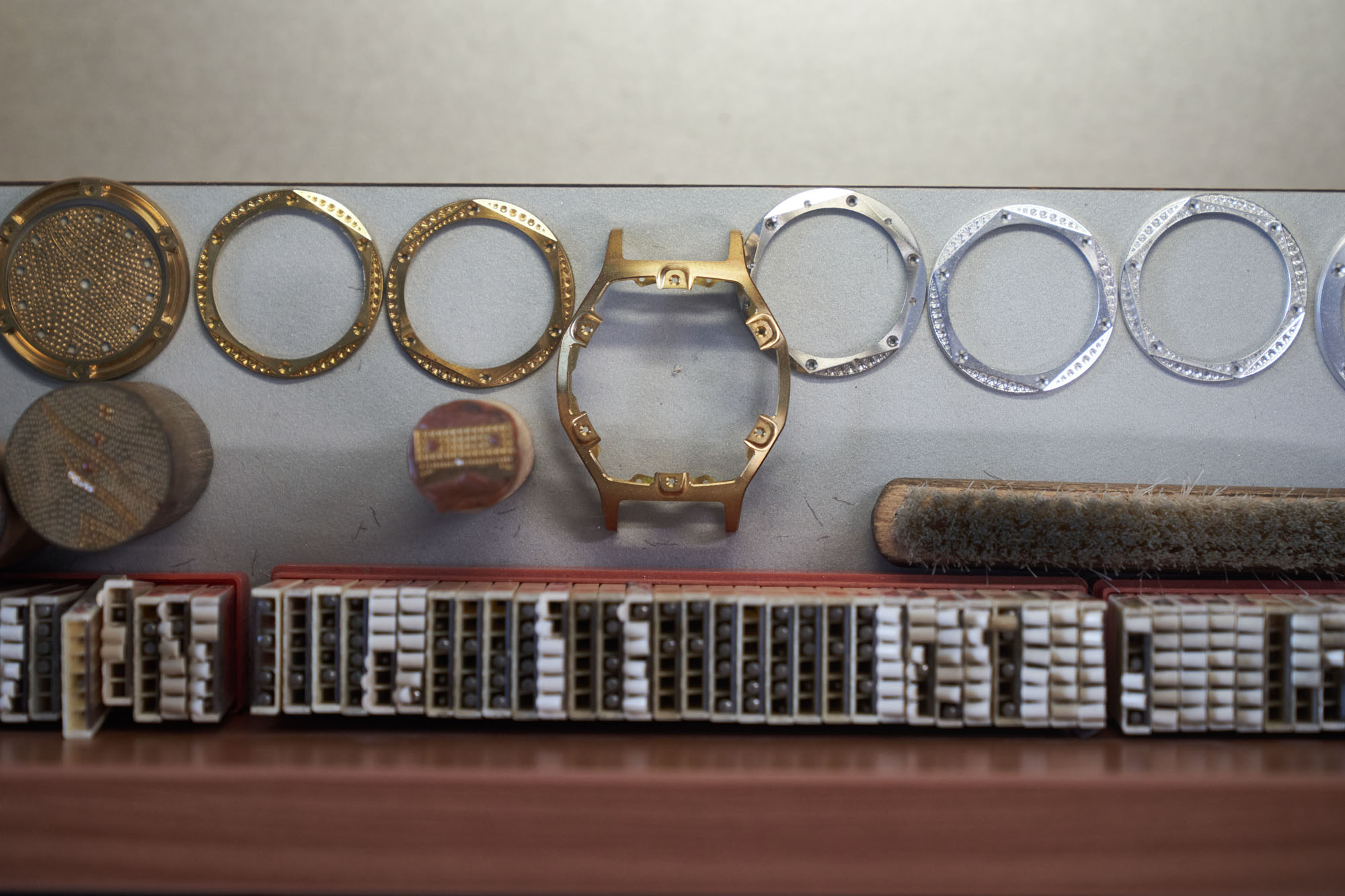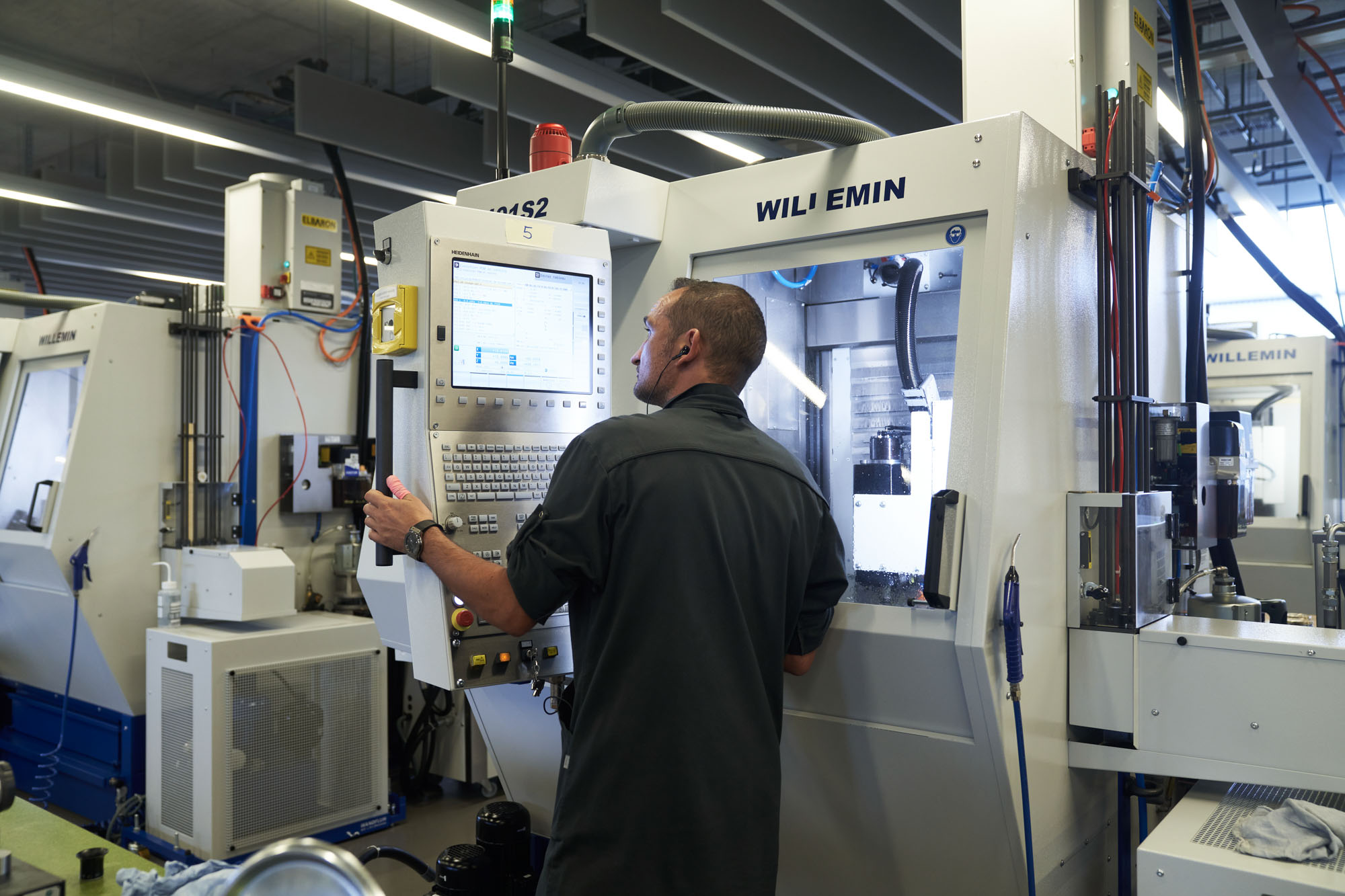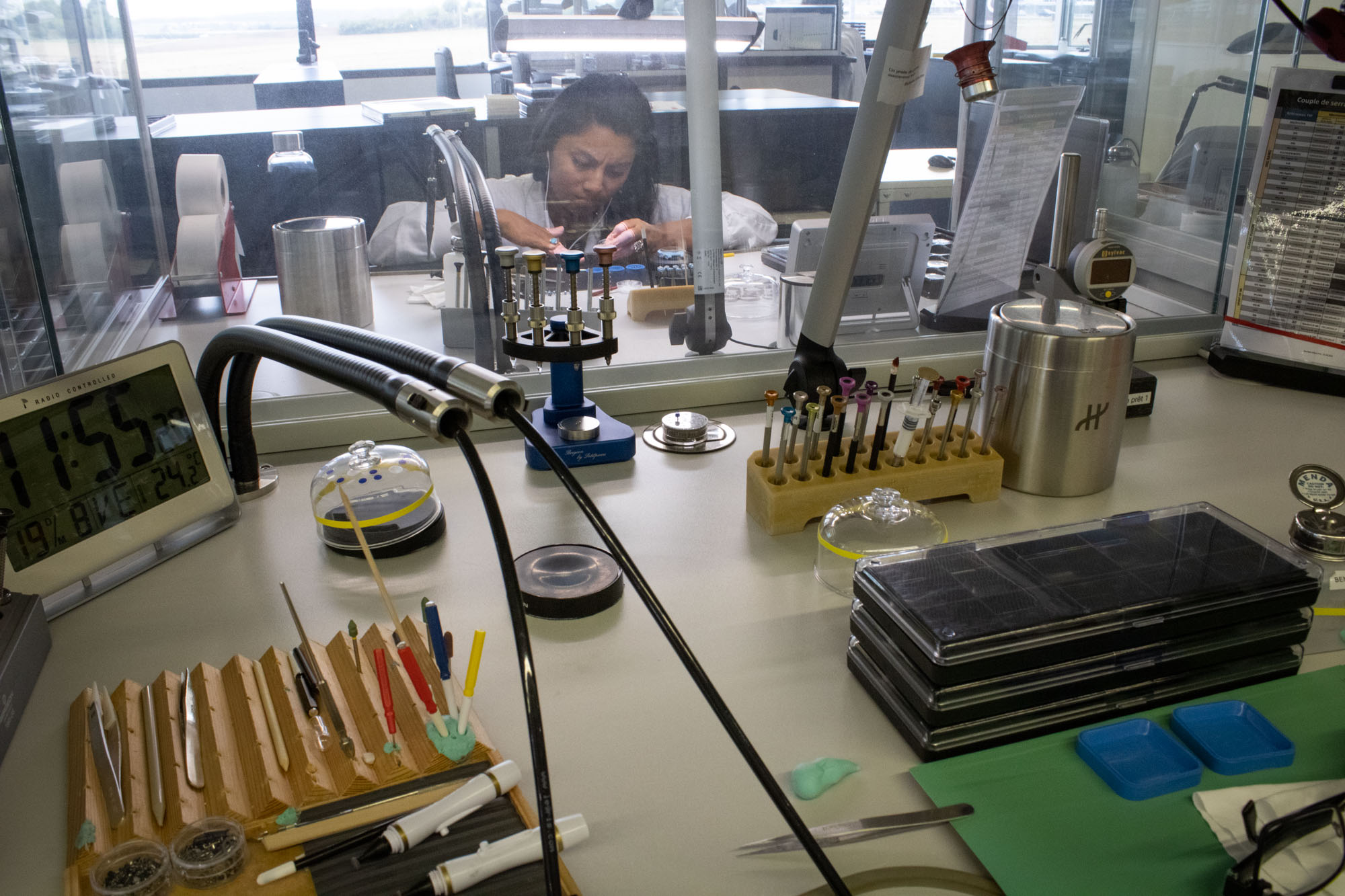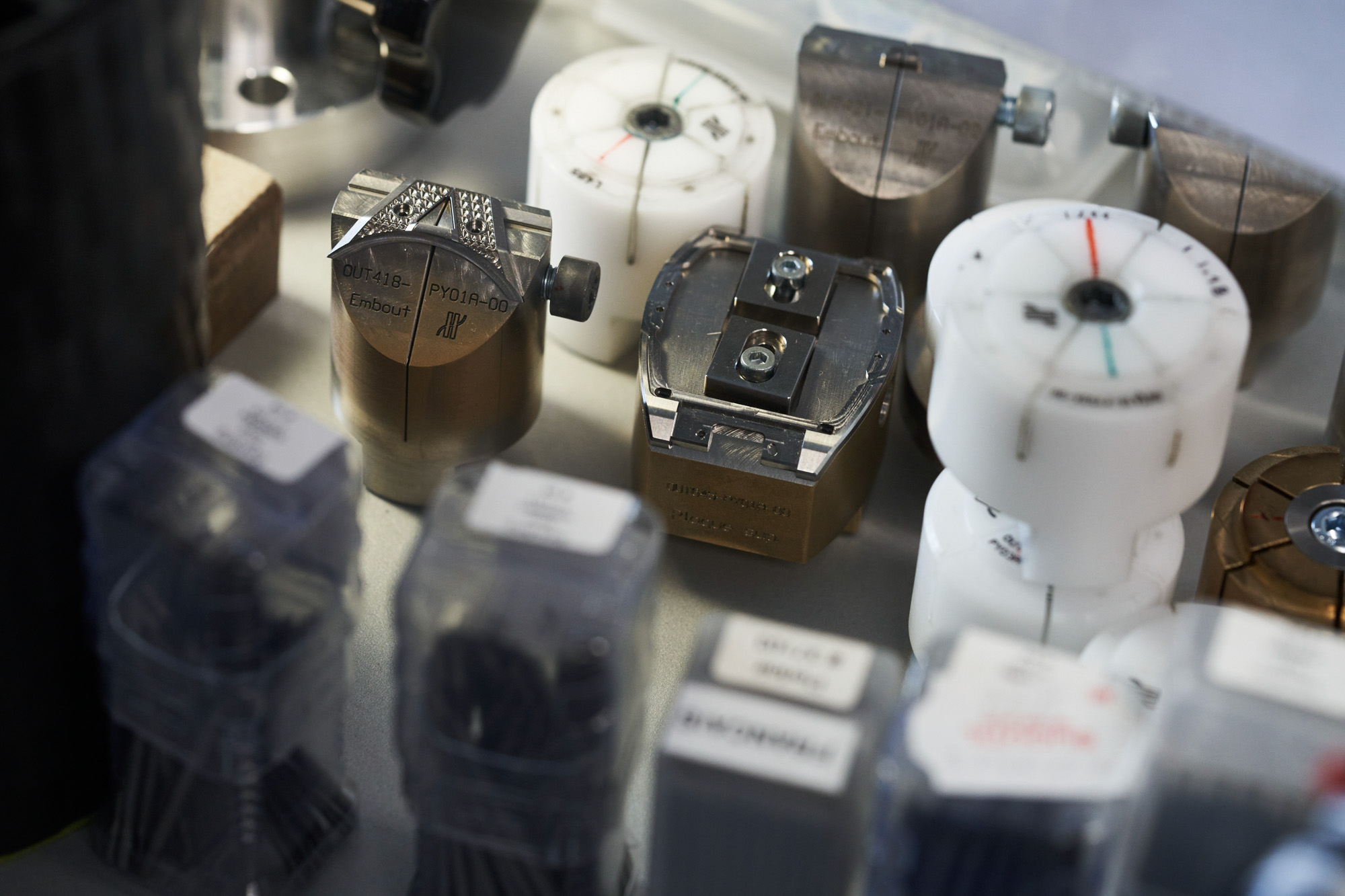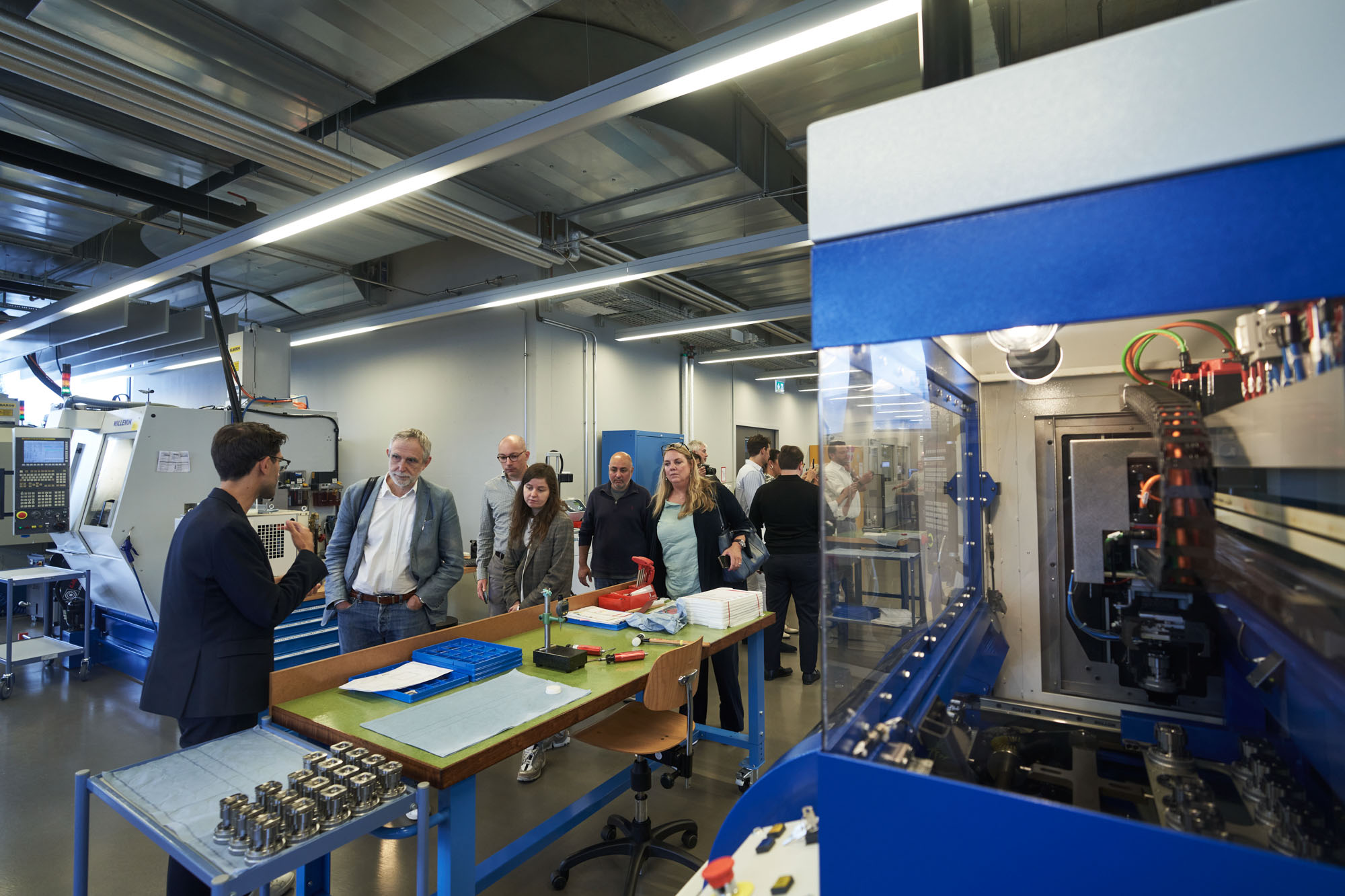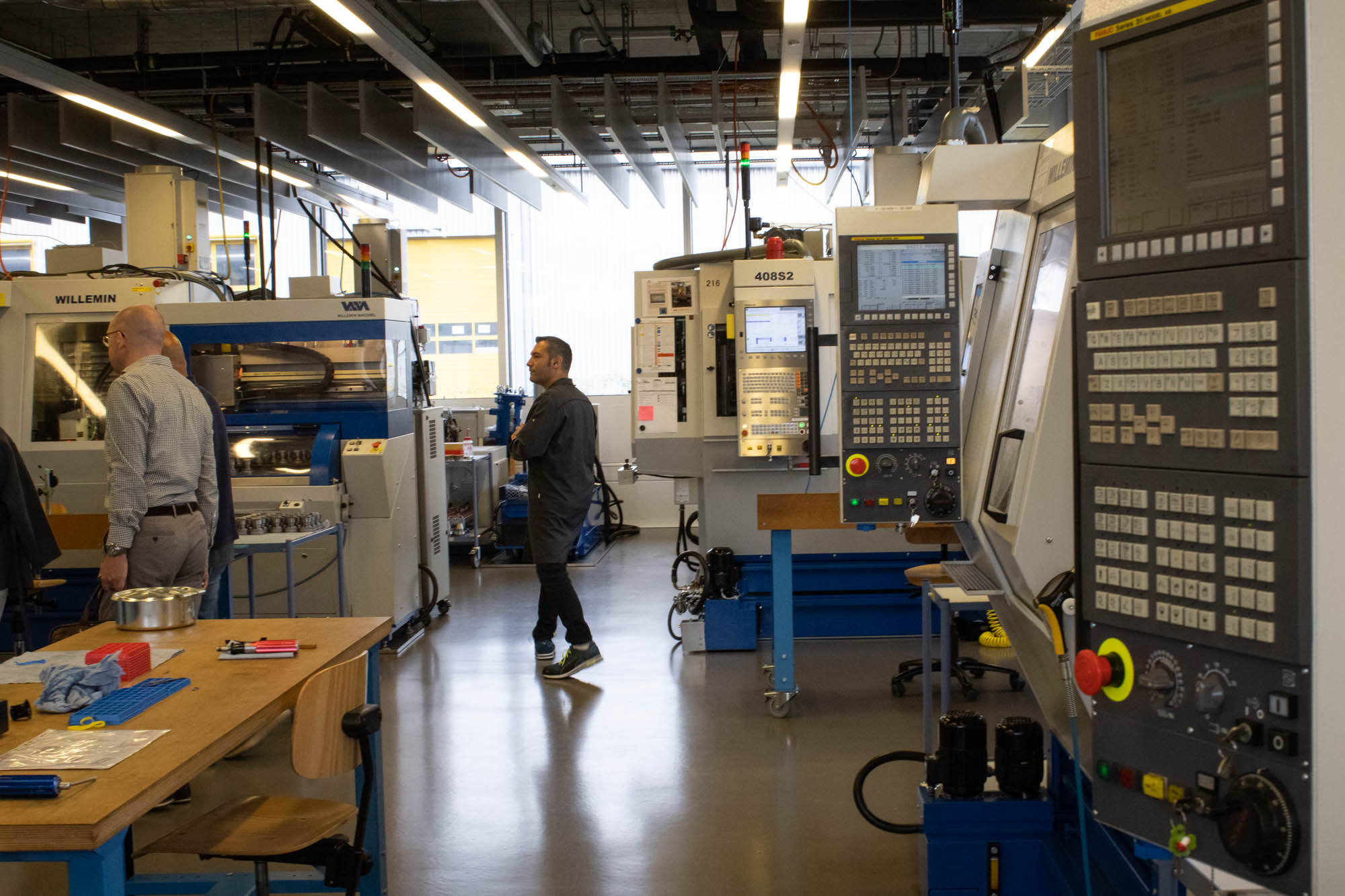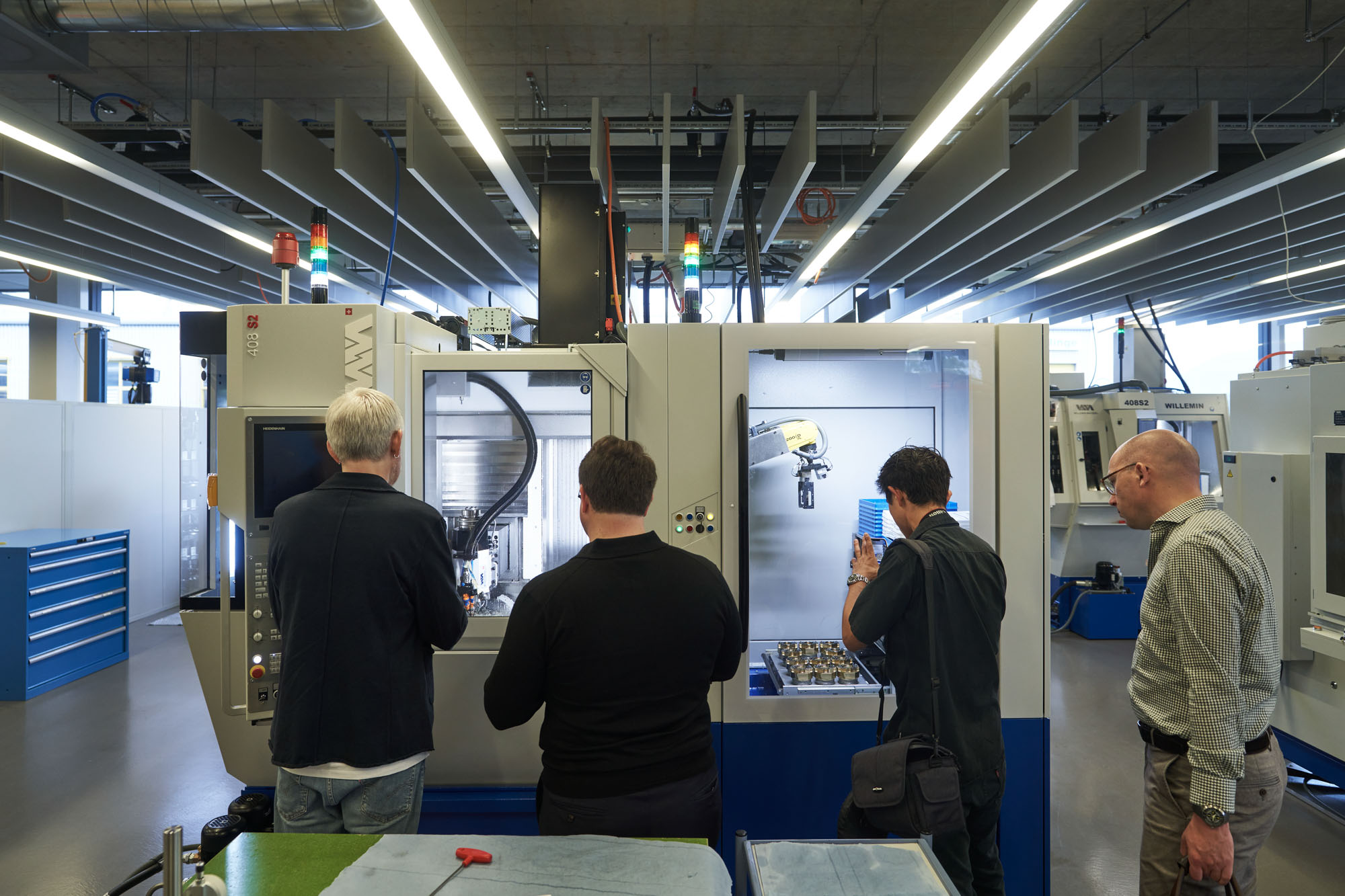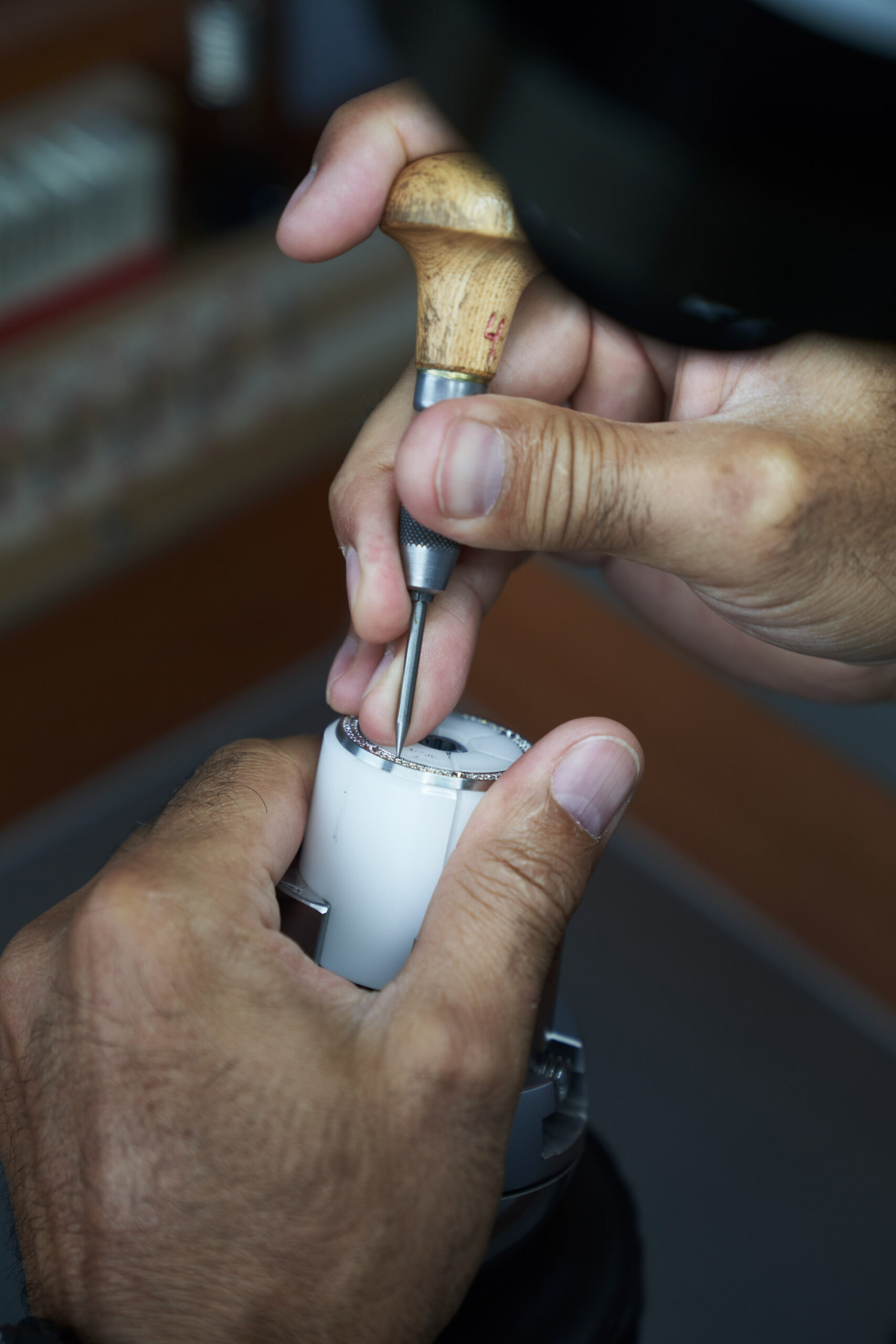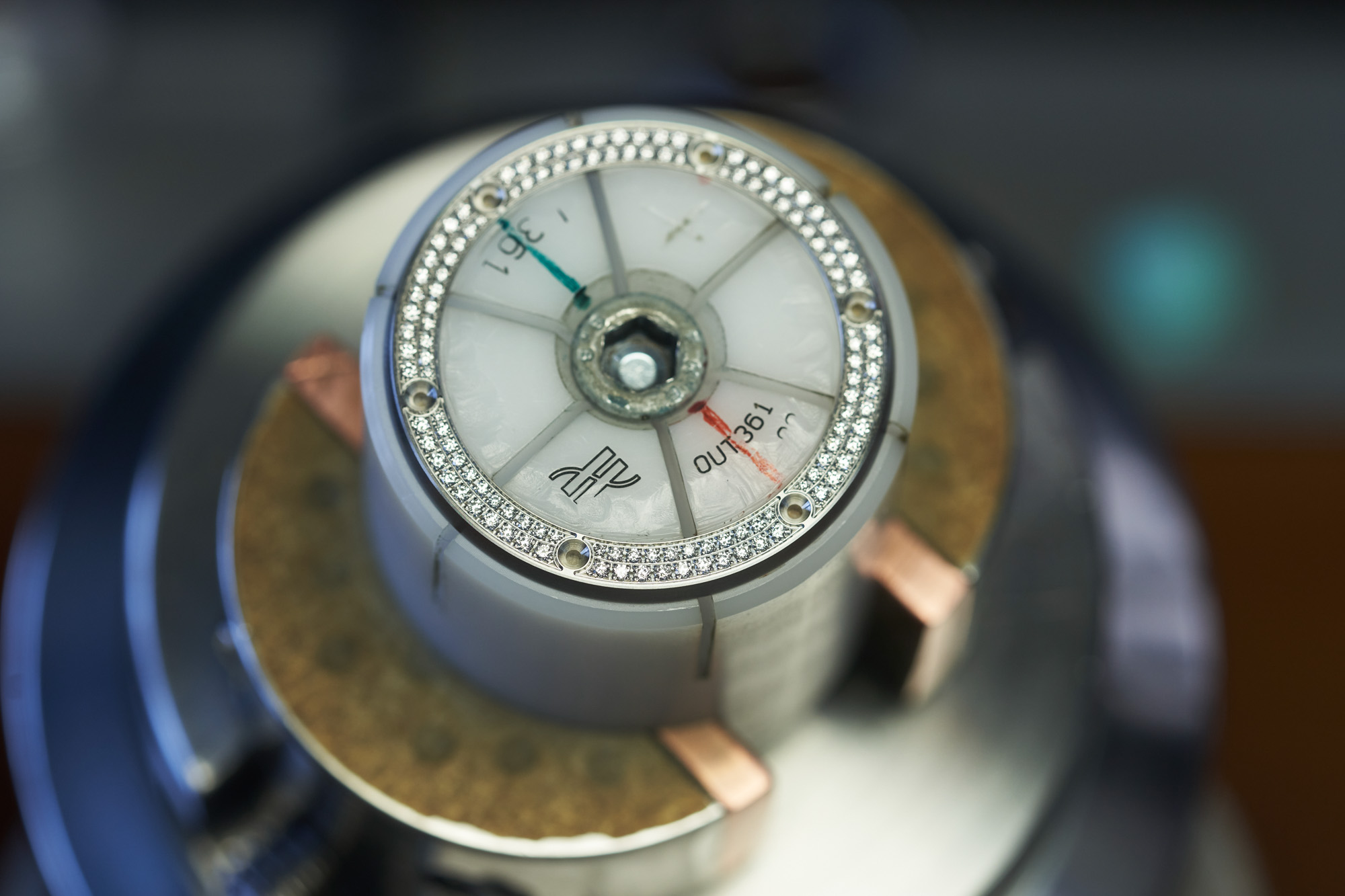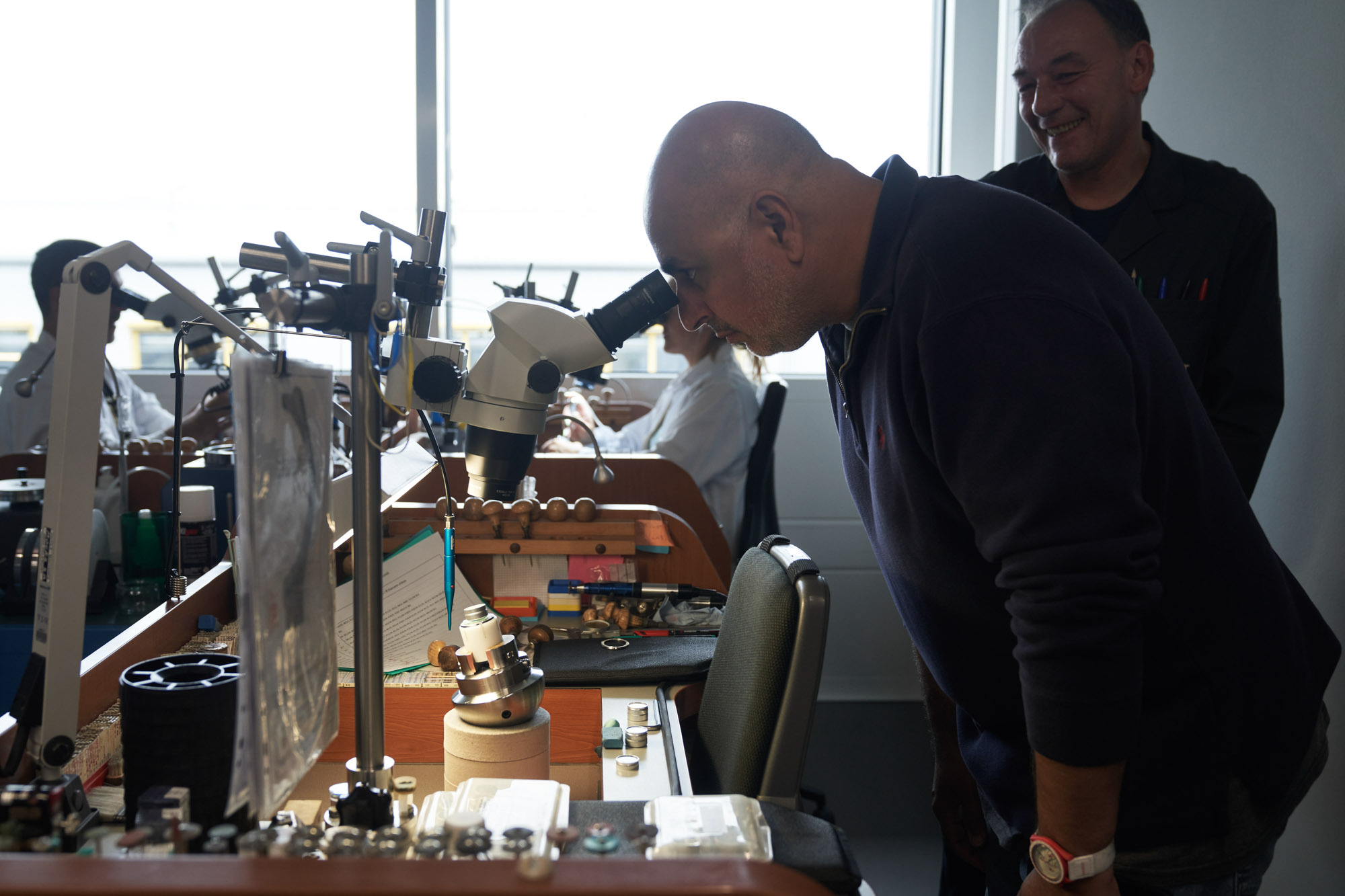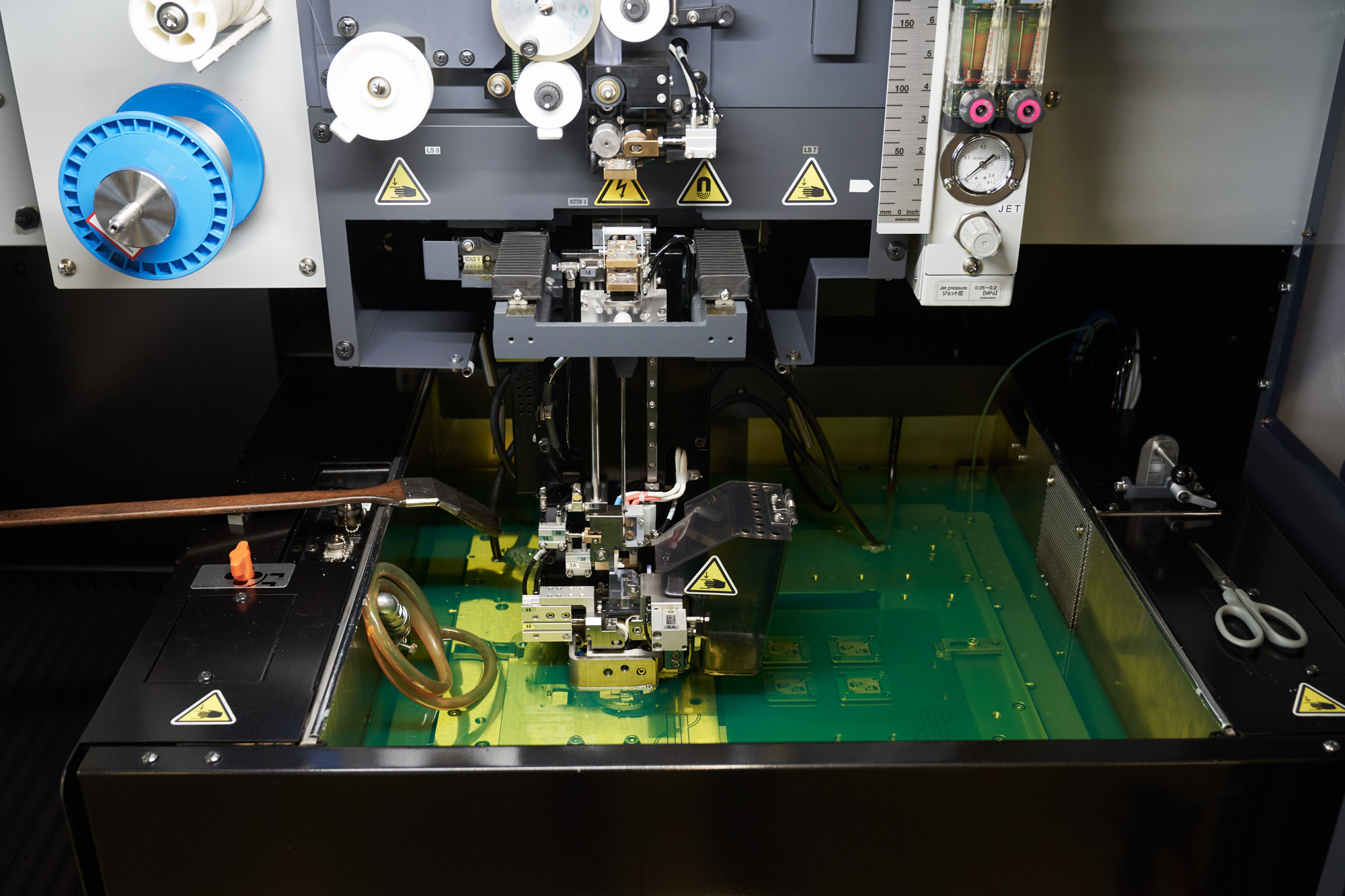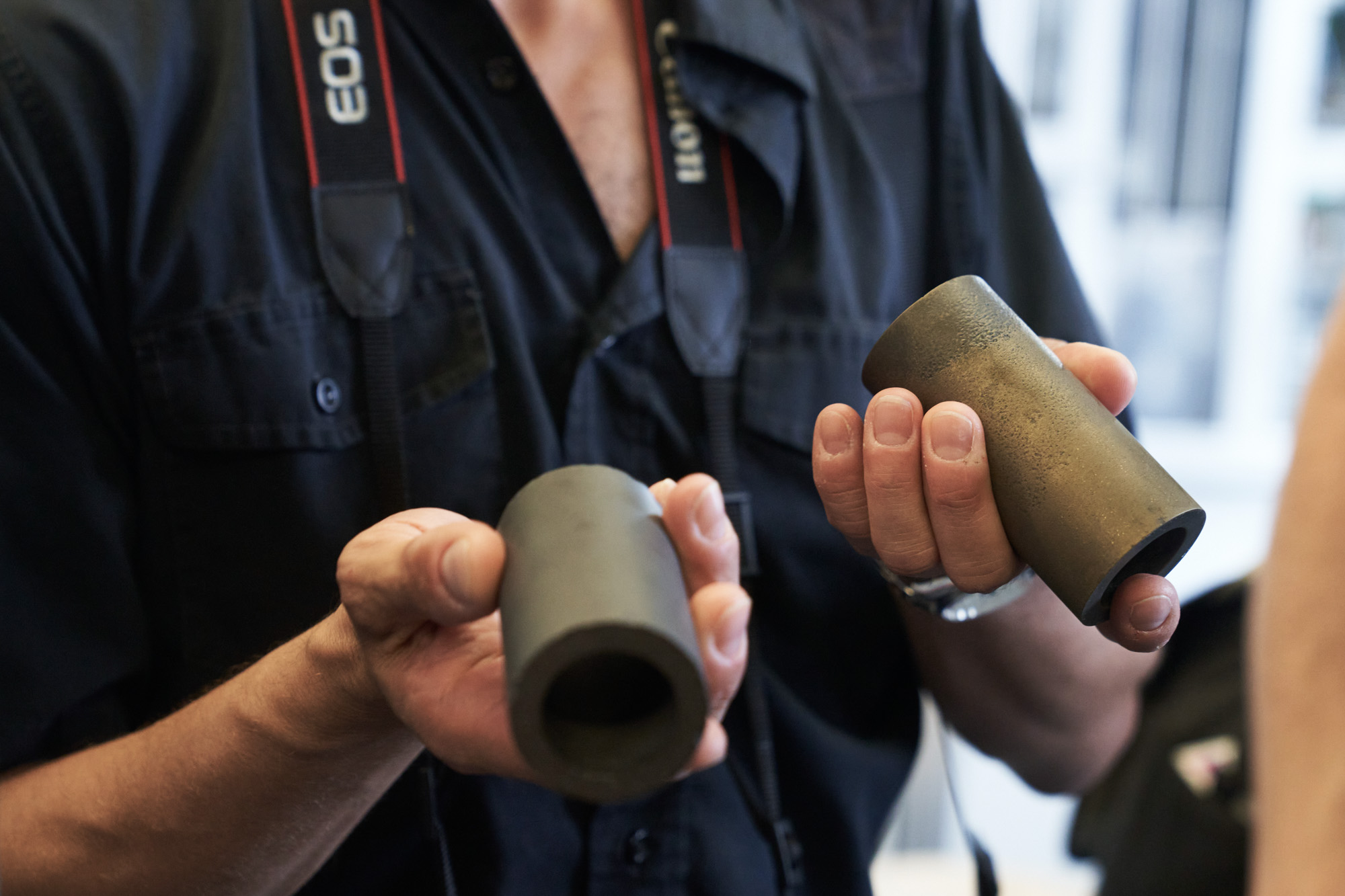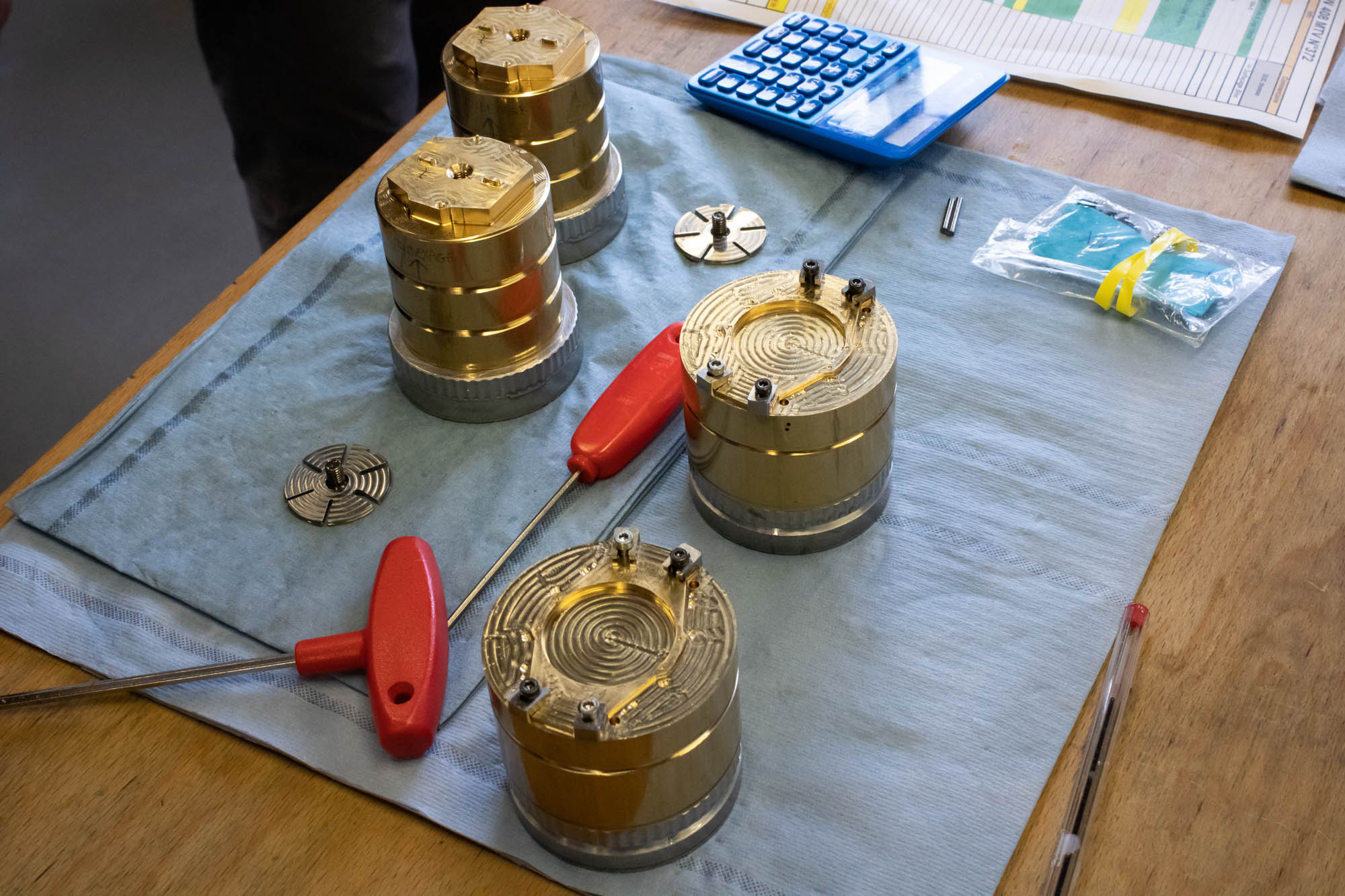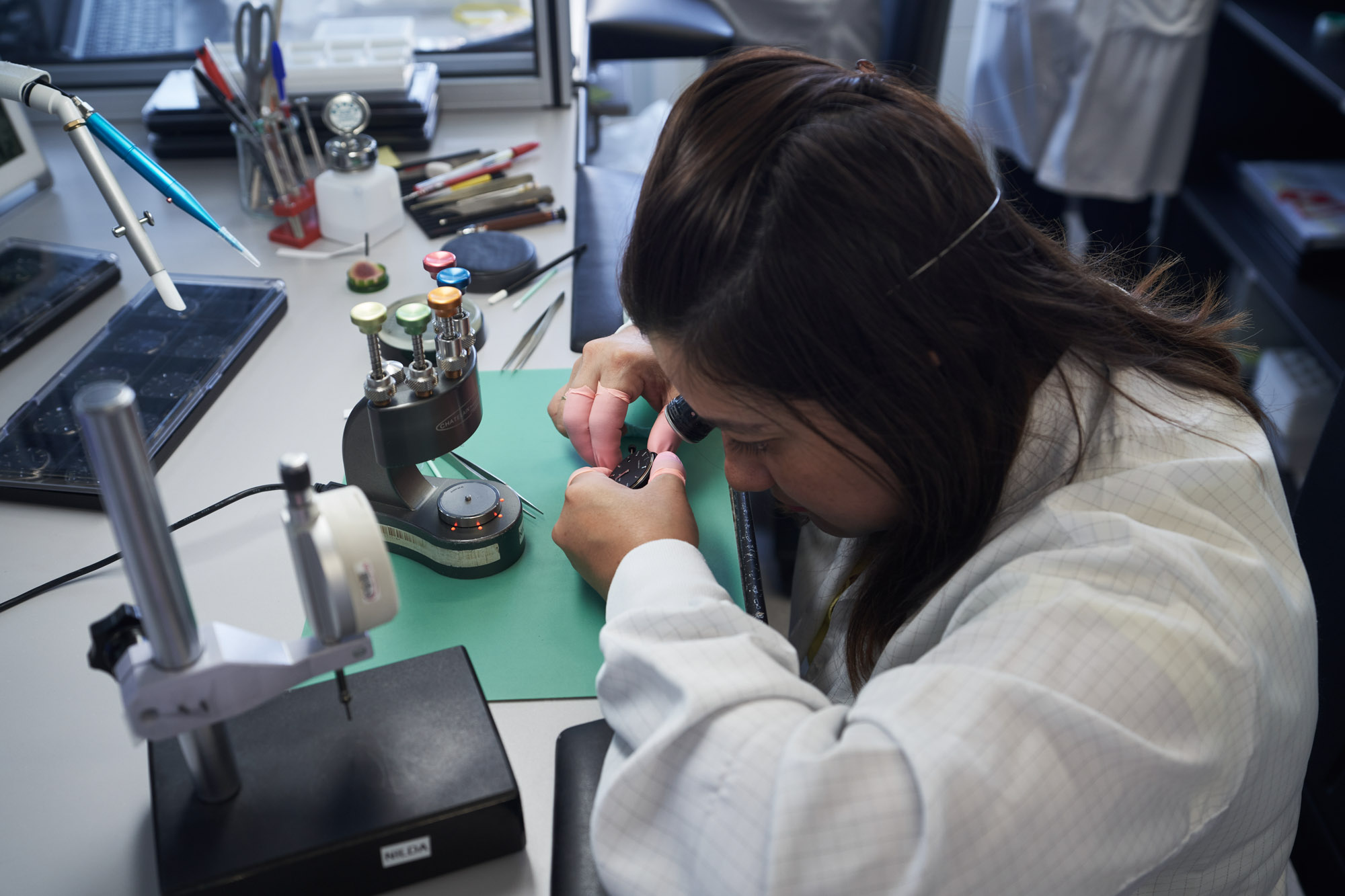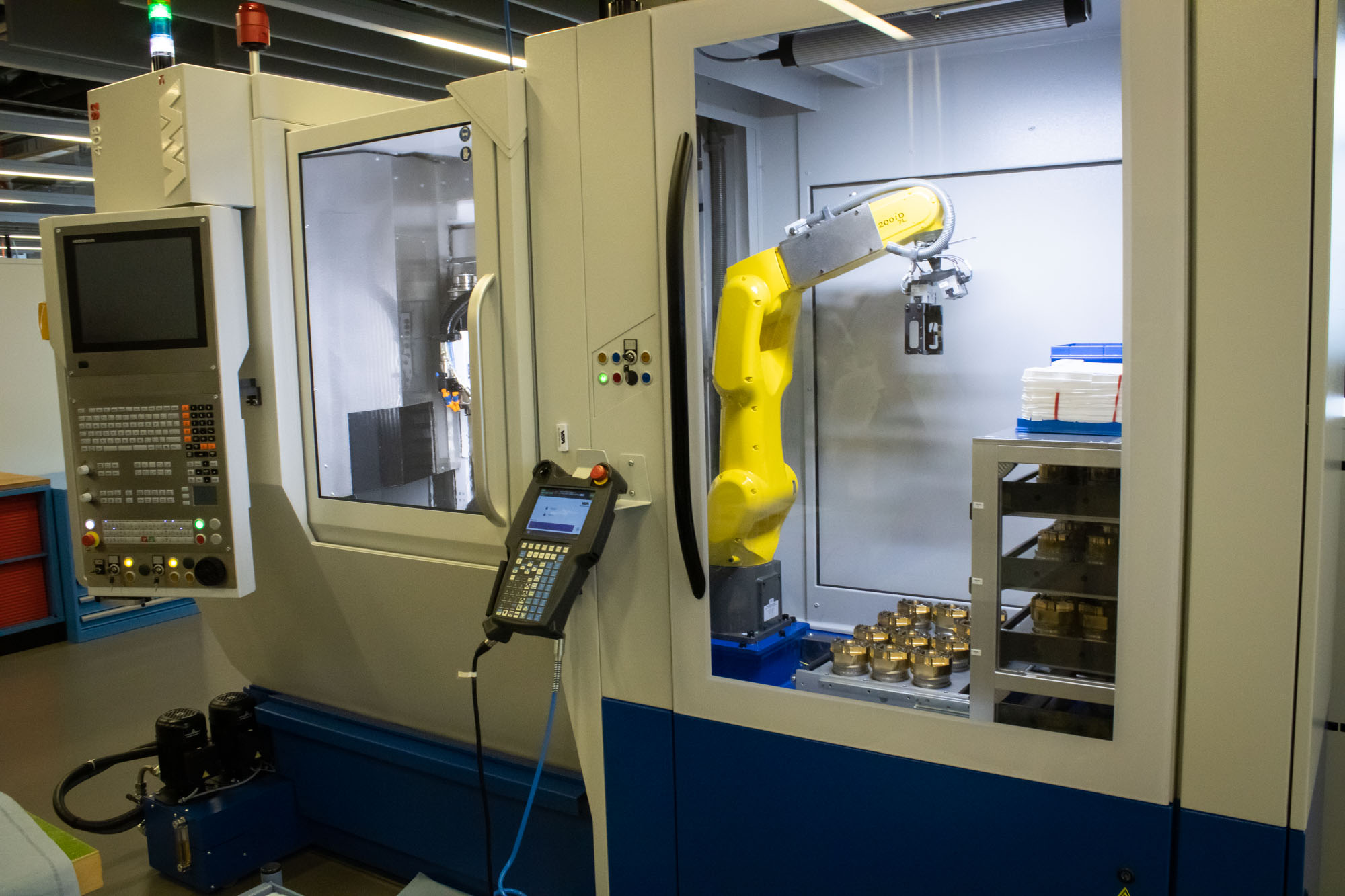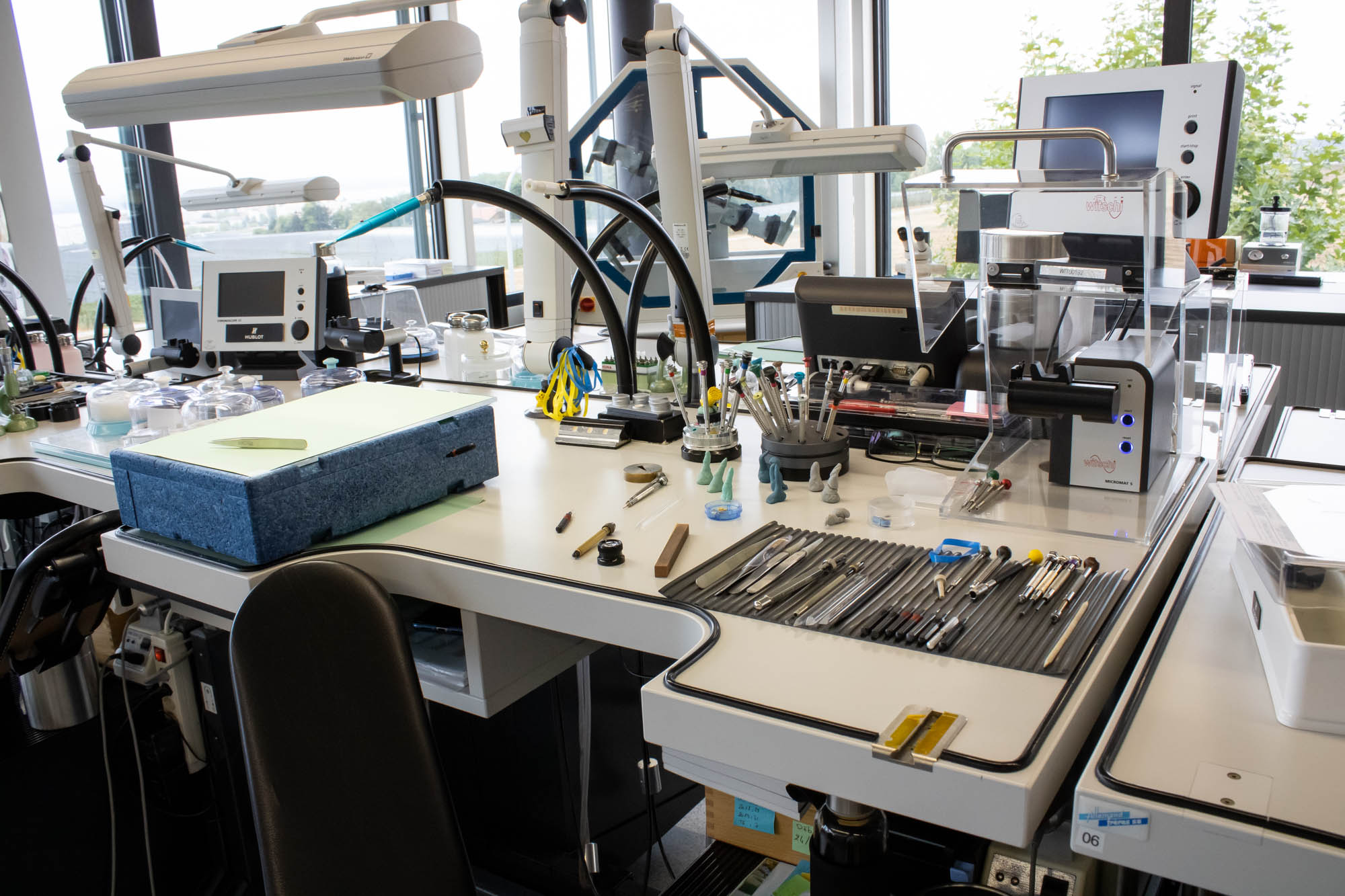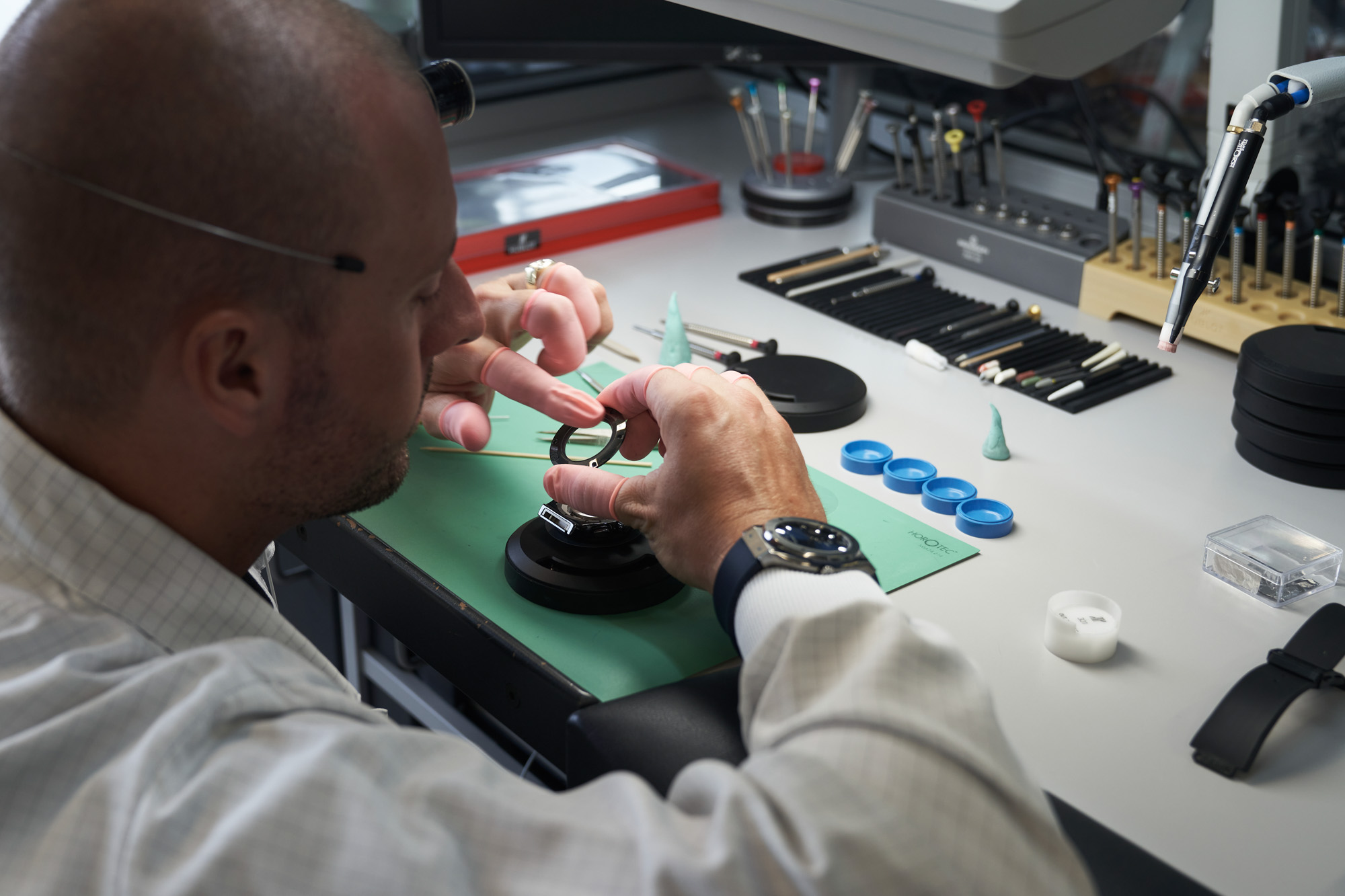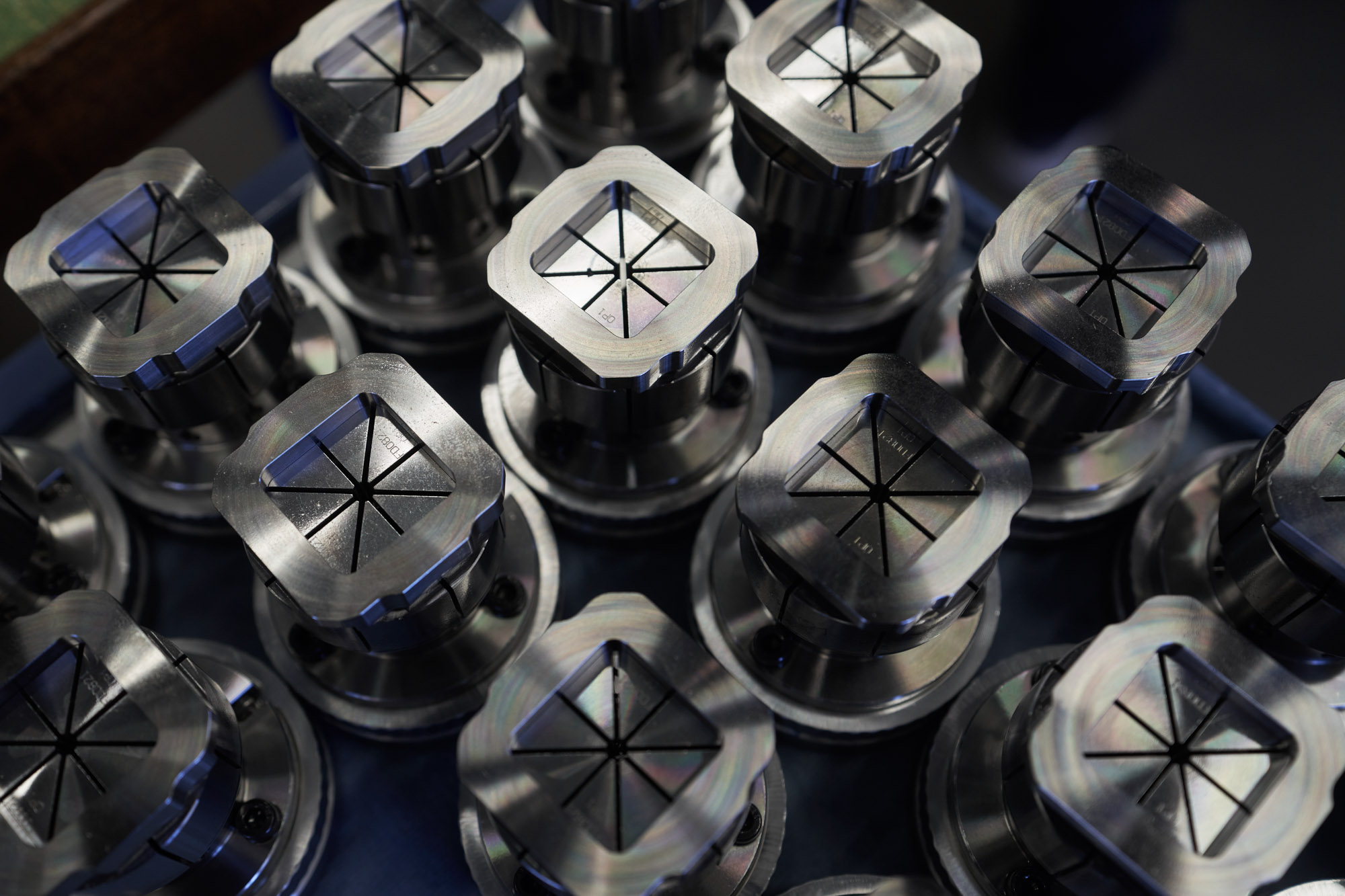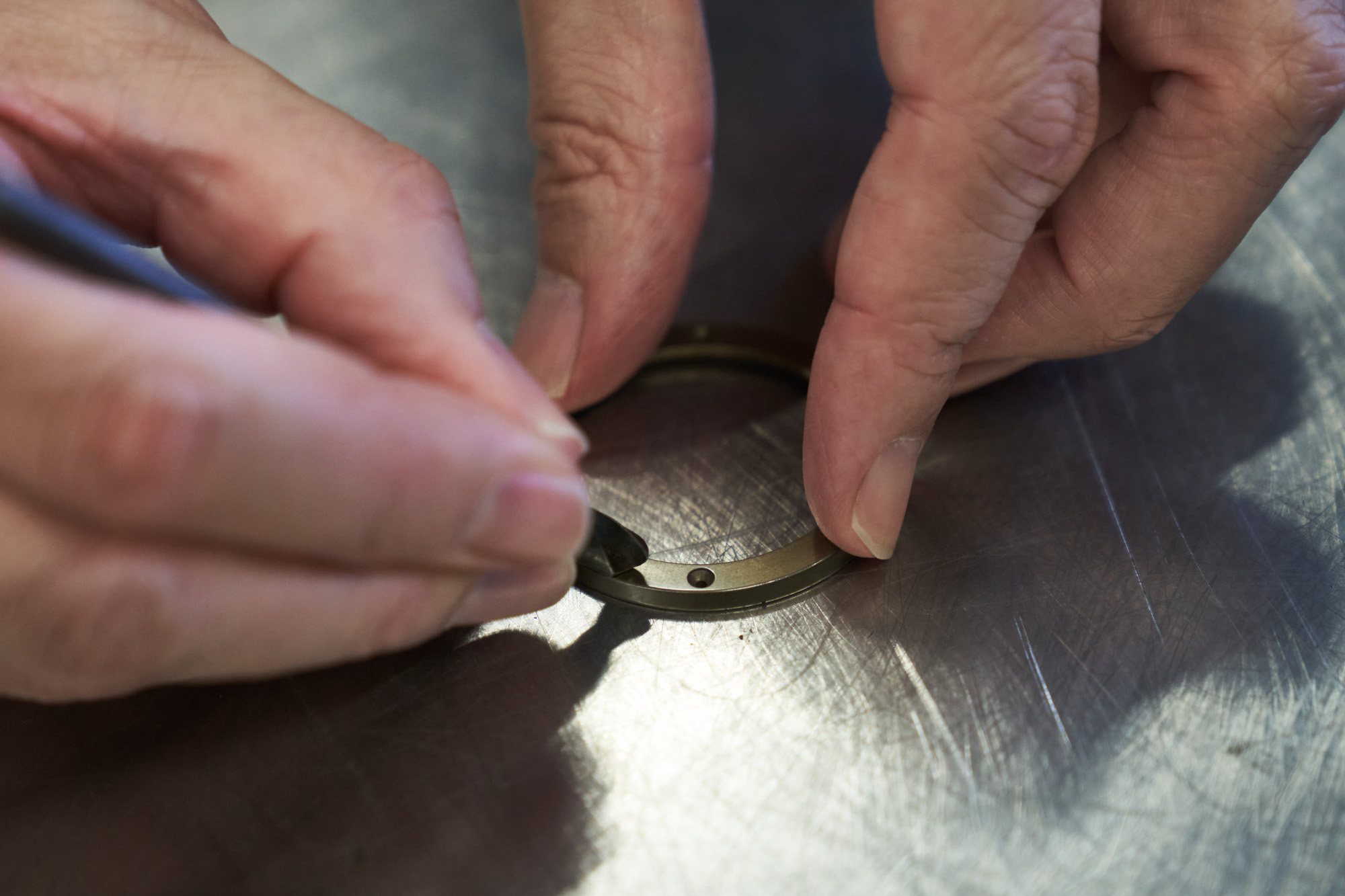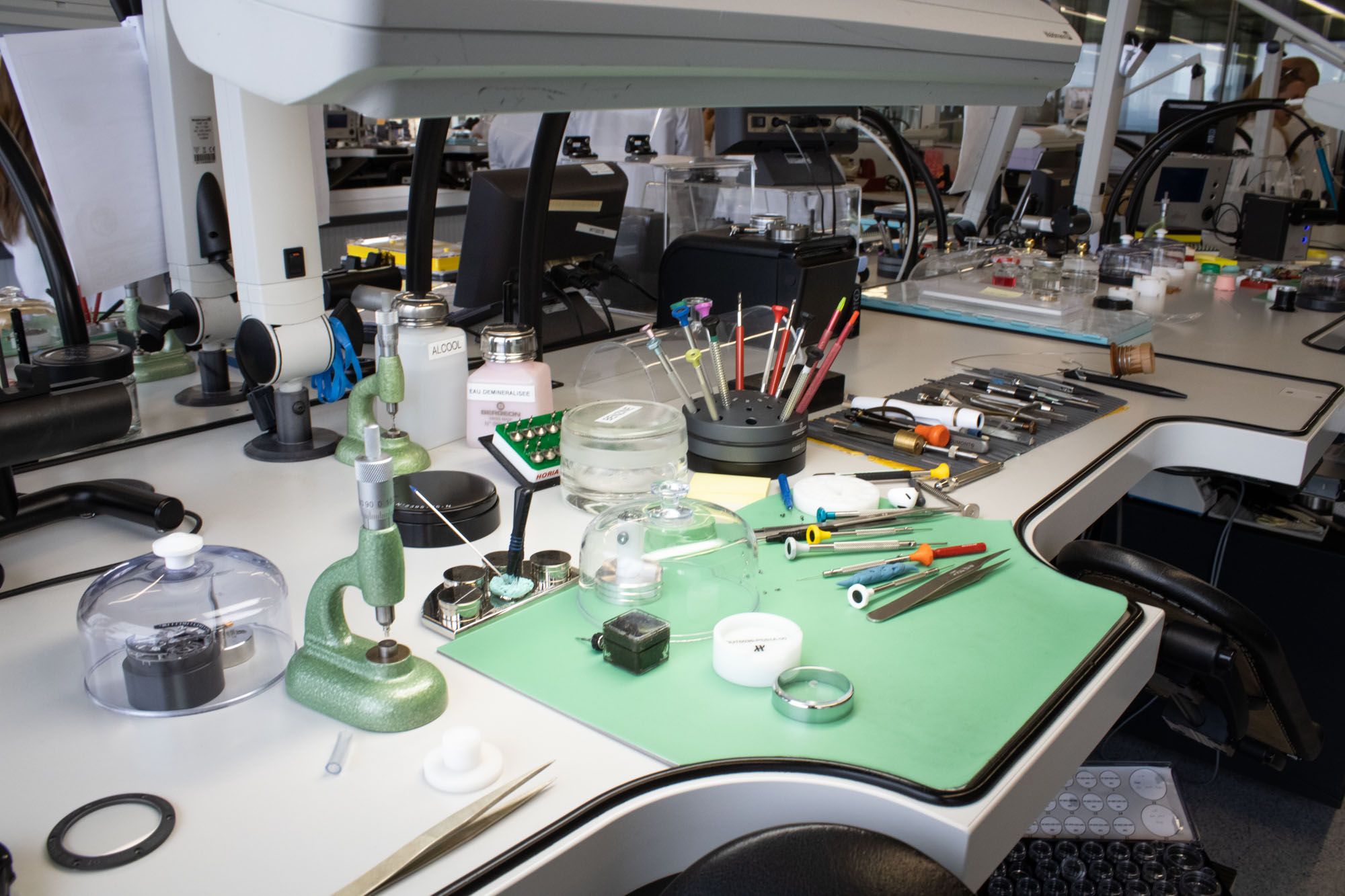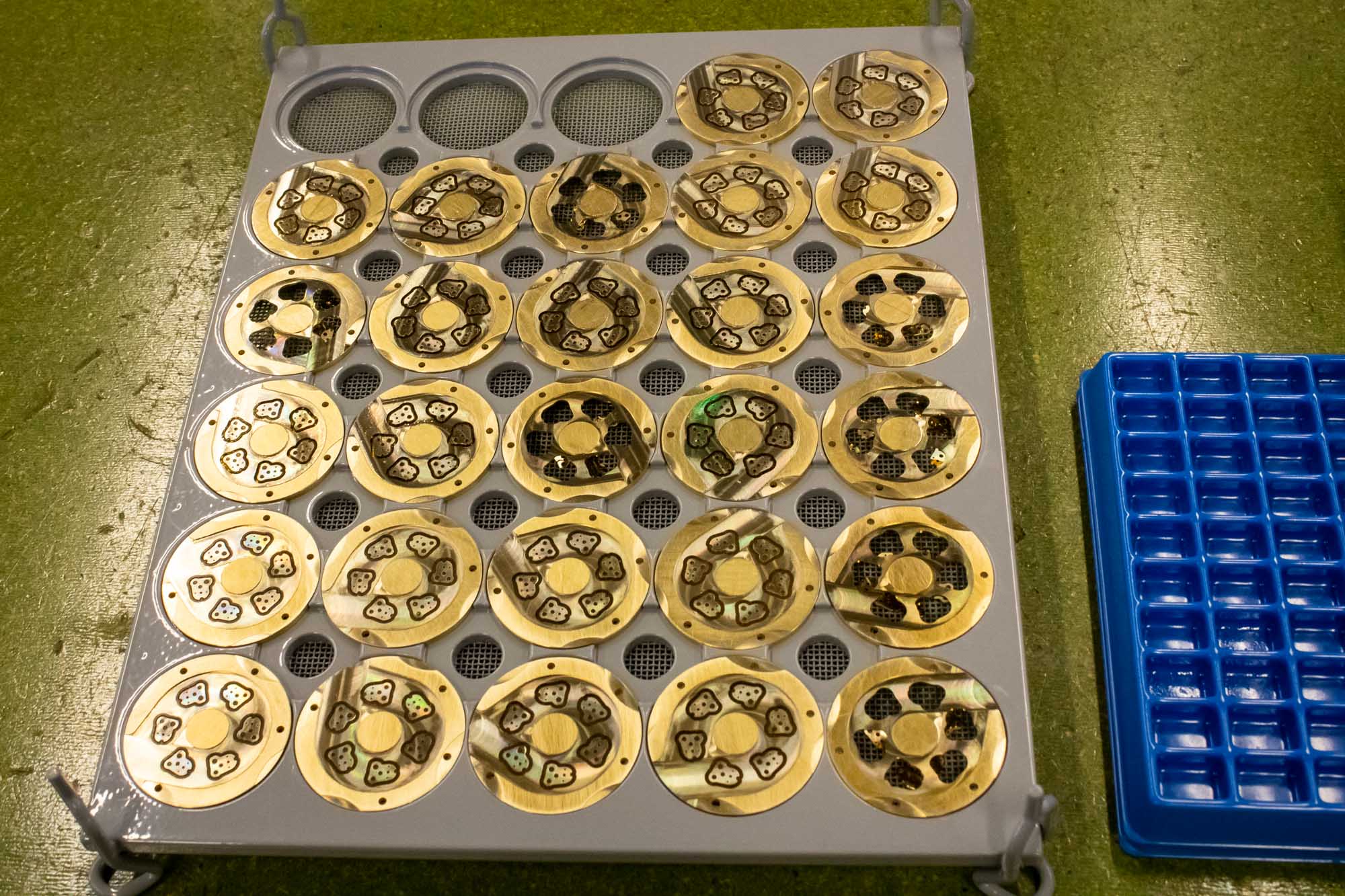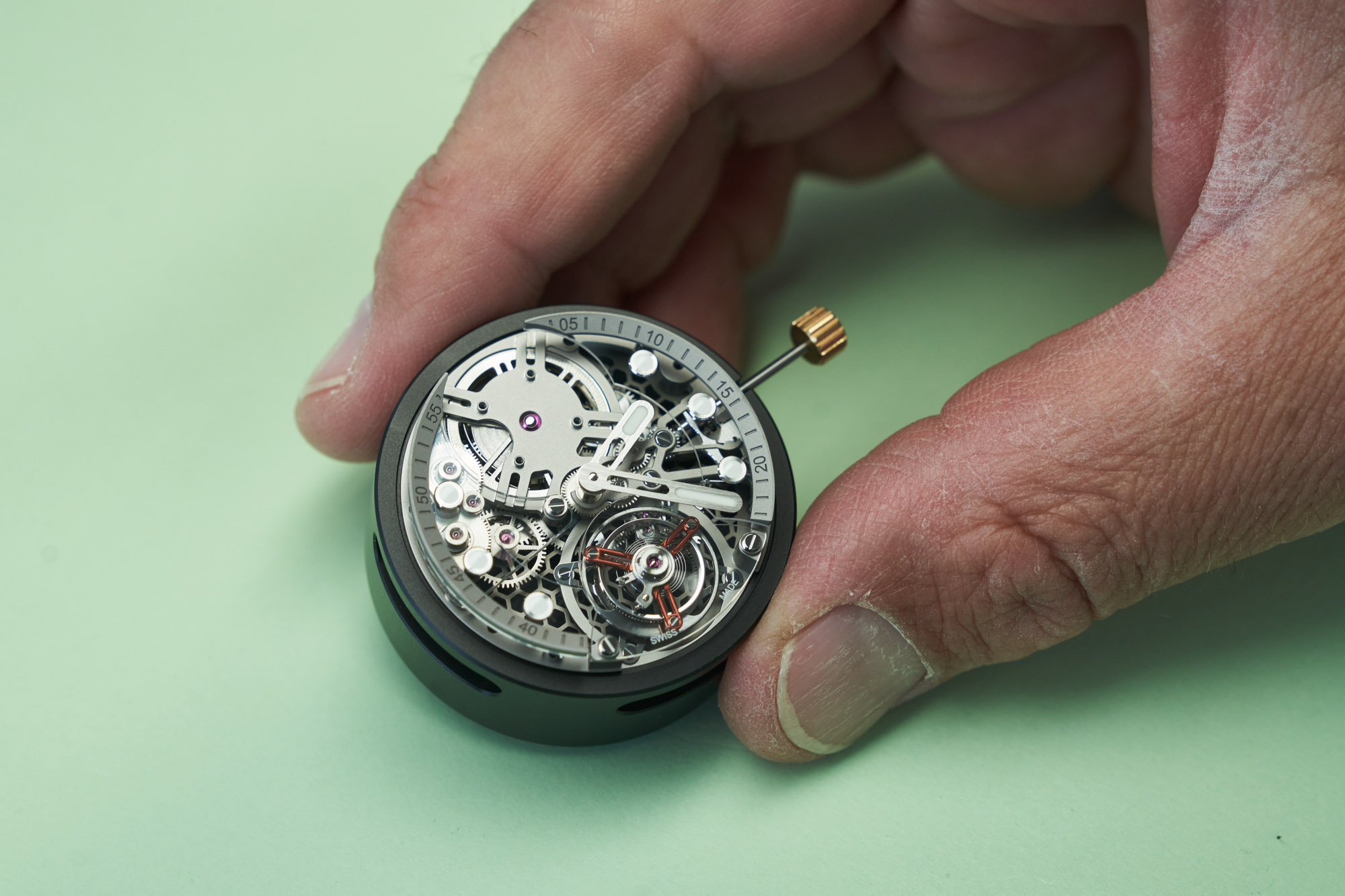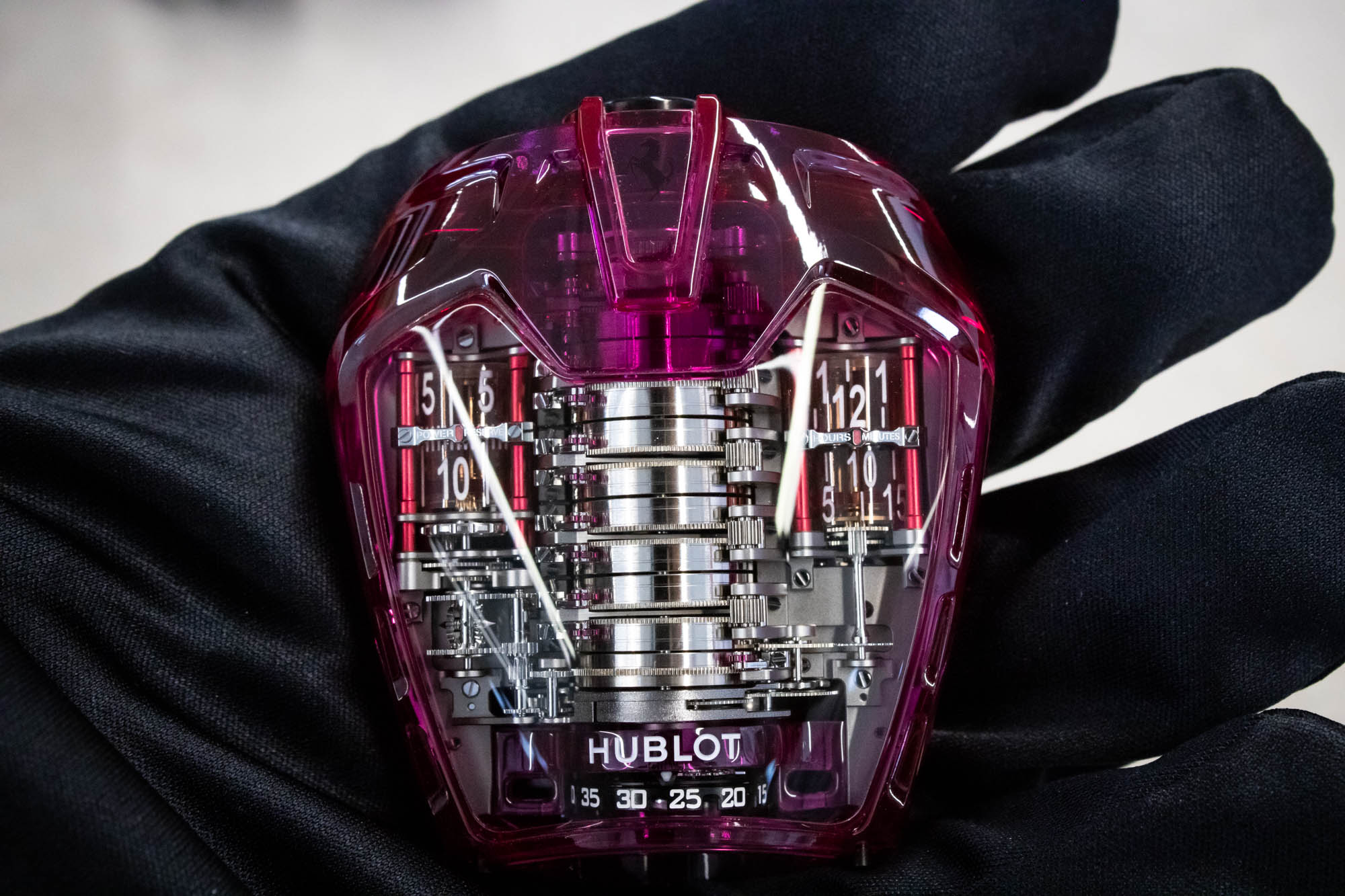
I recently had the opportunity to represent aBlogtoWatch among a group of writers and journalists who were invited by Hublot to take a tour of its manufacturing facilities in Nyon, Switzerland, and to attend the Hublot Polo Gold Cup Gstaad. The polo event itself was expectedly lovely — hosted by Hublot and held within the picturesque Swiss mountain town of Gstaad, not even a little bit of rain on the first day could dampen the mood. Members of the winning team each took home a Hublot watch as part of their prize, while the brand’s own team claimed a solid third-place finish. However, despite having a wonderful time watching polo in the mountains, it was the tour of the Hublot factory that I found to be the most interesting and eye-opening experience of my recent trip with the brand.
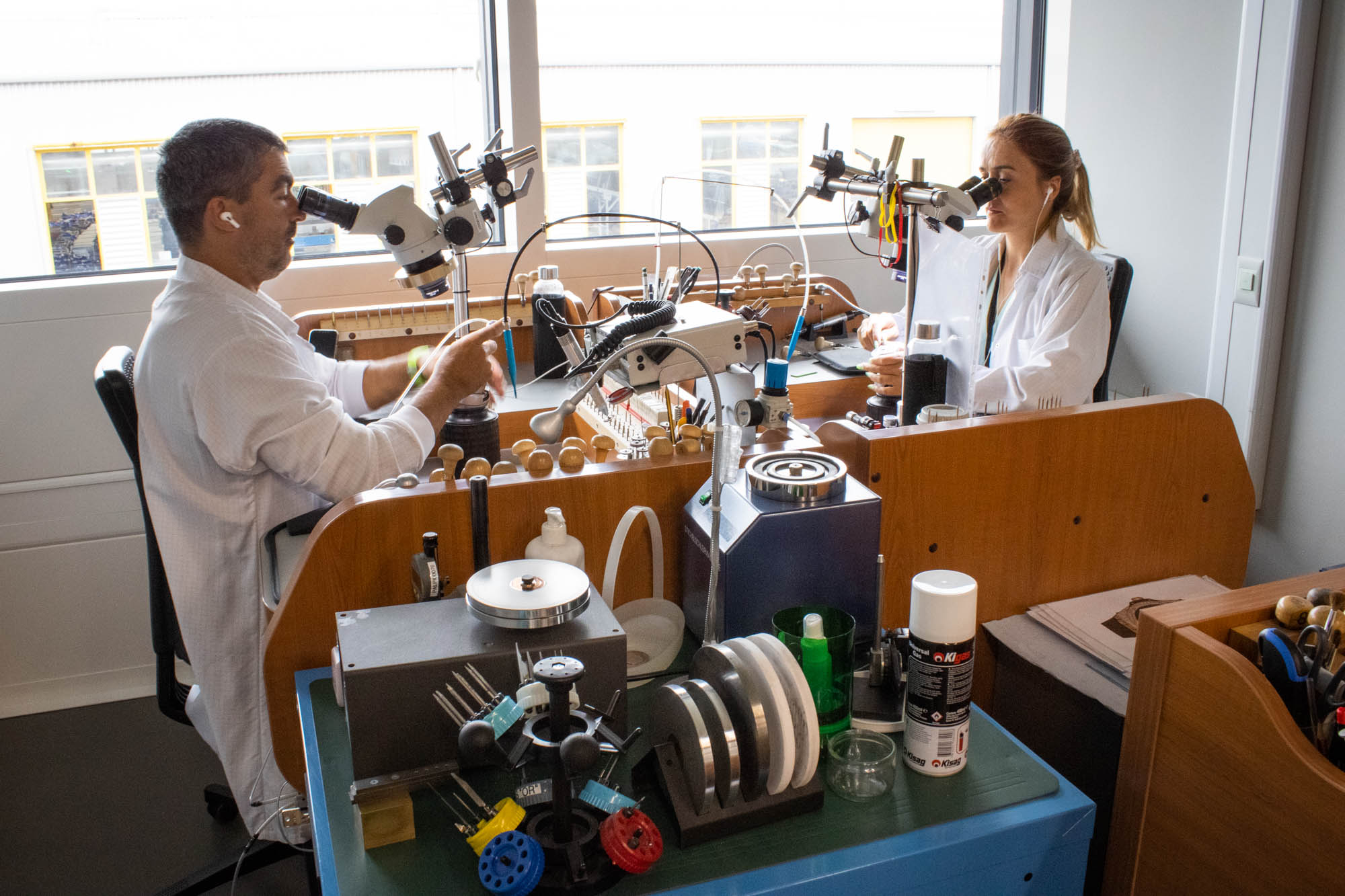
Within the world of general watch collecting and enthusiasm, I think a lot of people entirely misunderstand Hublot. Simply because the company produces timepieces that routinely cost tens of thousands of dollars doesn’t mean that it needs to create classically styled watches with traditional mid-century designs. Given that Hublot was founded in 1980 and didn’t really start to hit its stride until the Jean-Claude Biver years during the early 2000s, traditional designs were never part of the brand’s core identity. Hublot has always been bold and divisive in its design language, and in the same way that you need car companies like Lamborghini and Pagani producing brightly colored super-vehicles to add flavor to the automobile industry, Hublot adds a similar dash of striking fun to the historically rather conservative landscape of luxury watches. Once you realize that Hublot is very self-aware and that the brand is entirely comfortable with its identity, it becomes clear that the timepieces being created by Hublot are exactly the type that the brand should be producing, regardless of whether or not you personally feel that they belong on your specific wrist.
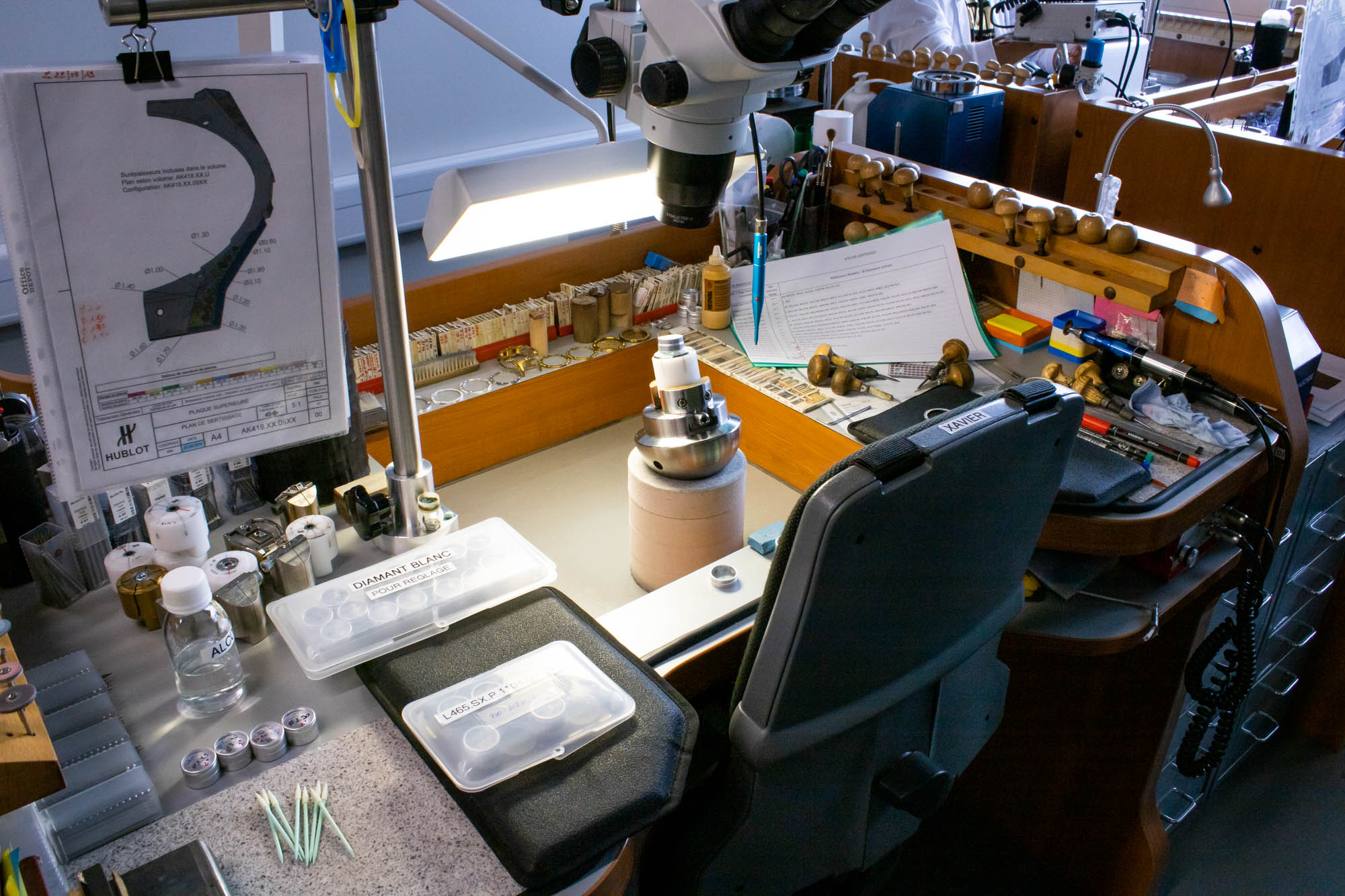
However, one thing I didn’t fully realize until visiting the Hublot factory is that while the brand takes its watchmaking, technology, product development, and manufacturing all very seriously, it doesn’t take itself too seriously to the point where it becomes incapable of having fun. Standing right inside the entranceway to the first of two buildings that form the state-of-the-art manufacture is a giant blue Richard Orlinski gorilla sculpture, and a similar dose of high-end yet slightly cheeky personality can be found throughout the rest of the facility’s hallways, which feature renditions of famous paintings that have all been modified in various creative ways to incorporate different Hublot watches. As a company that began its life at the dawn of the digital era, Hublot doesn’t have a centuries-old history filled with strict traditions that it would be betraying by having a bit of irreverent fun, indulging in creative collaborations, or simply producing flat-out whimsical pieces such as the rainbow Takashi Murakami watch, the MP-05 LaFerrari with its 50-day power reserve, or any of the various models with cases made entirely from colored transparent sapphire.

With that in mind, just because Hublot isn’t afraid of having fun doesn’t mean that the brand isn’t also highly committed to pushing the boundaries of its watchmaking, and nowhere is this more apparent than when looking at some of the advancements it has made in regards to the case materials used for its timepieces. Alongside a full assortment of transparent sapphire cases in various colors, is an entire spectrum of brightly colored ceramics that Hublot produces in-house, along with “Magic Gold,” which is a special type of 18k gold alloy that Hublot creates from within its fully-integrated gold foundry that offers a dark and smoky appearance and is virtually impossible to scratch.
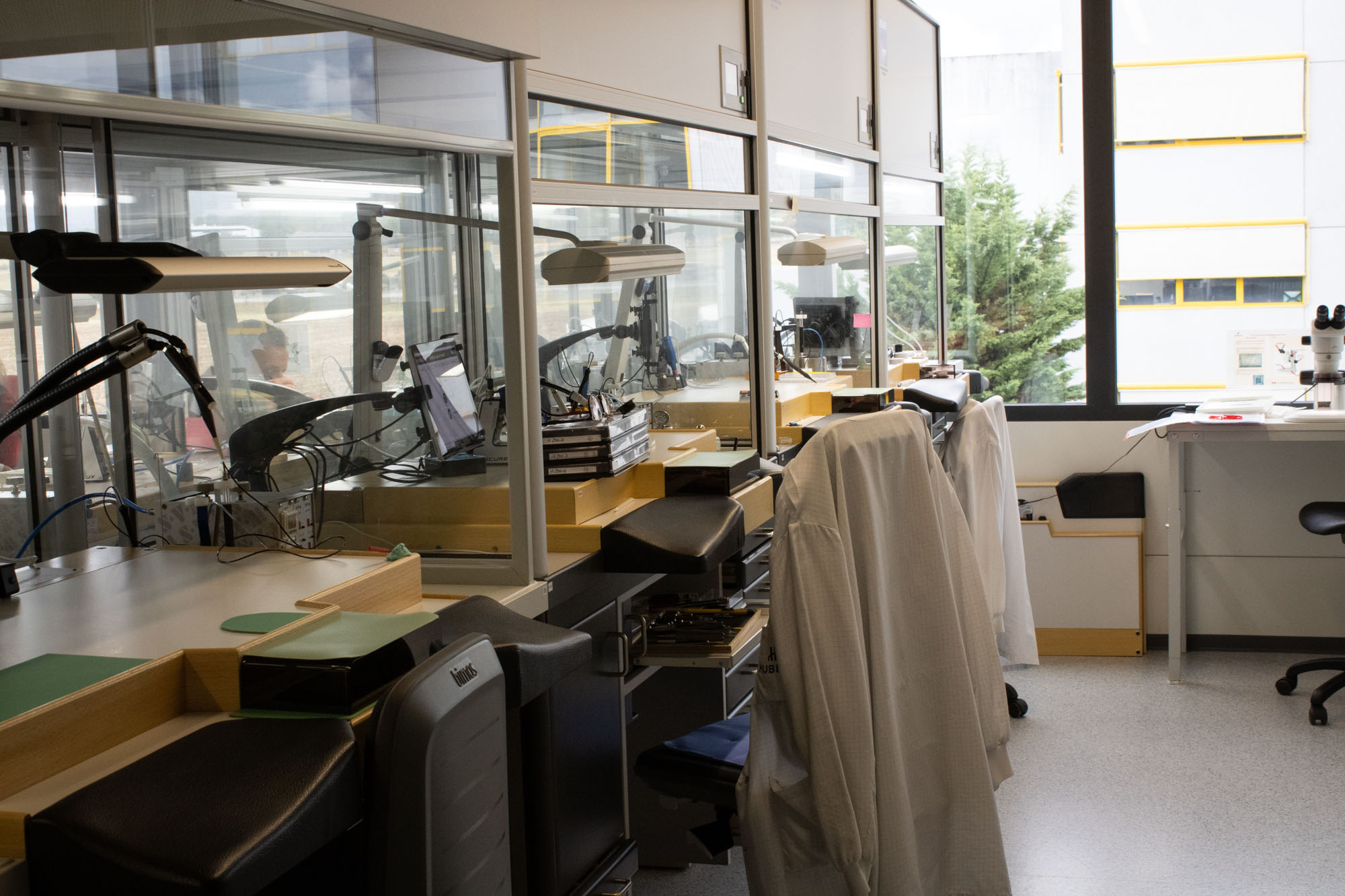
Colored ceramic seems like it would be fairly simple and straightforward to produce, but the process of creating highly durable ceramics in vibrant and specific colors has a surprising number of different challenges. Due to the simple fact that the production of ceramic involves extreme heat, a lot of the different types of dyes and pigments that are traditionally used to achieve certain colors will burn off during the production process, leaving a material with a muted and blotchy appearance, rather than the vibrant, even, and ultra-saturated colors of ceramic that can be seen throughout Hublot’s current catalog. Additionally, due to the fact that ceramic is an incredibly hard and rigid material (this is what makes it near-impossible to scratch), you ideally want to have the actual material itself be the desired color, rather than trying to rely on chemical treatments or surface coatings, which would either offer an extremely limited range of viable color options or would otherwise rub off and chip away incredibly quickly.
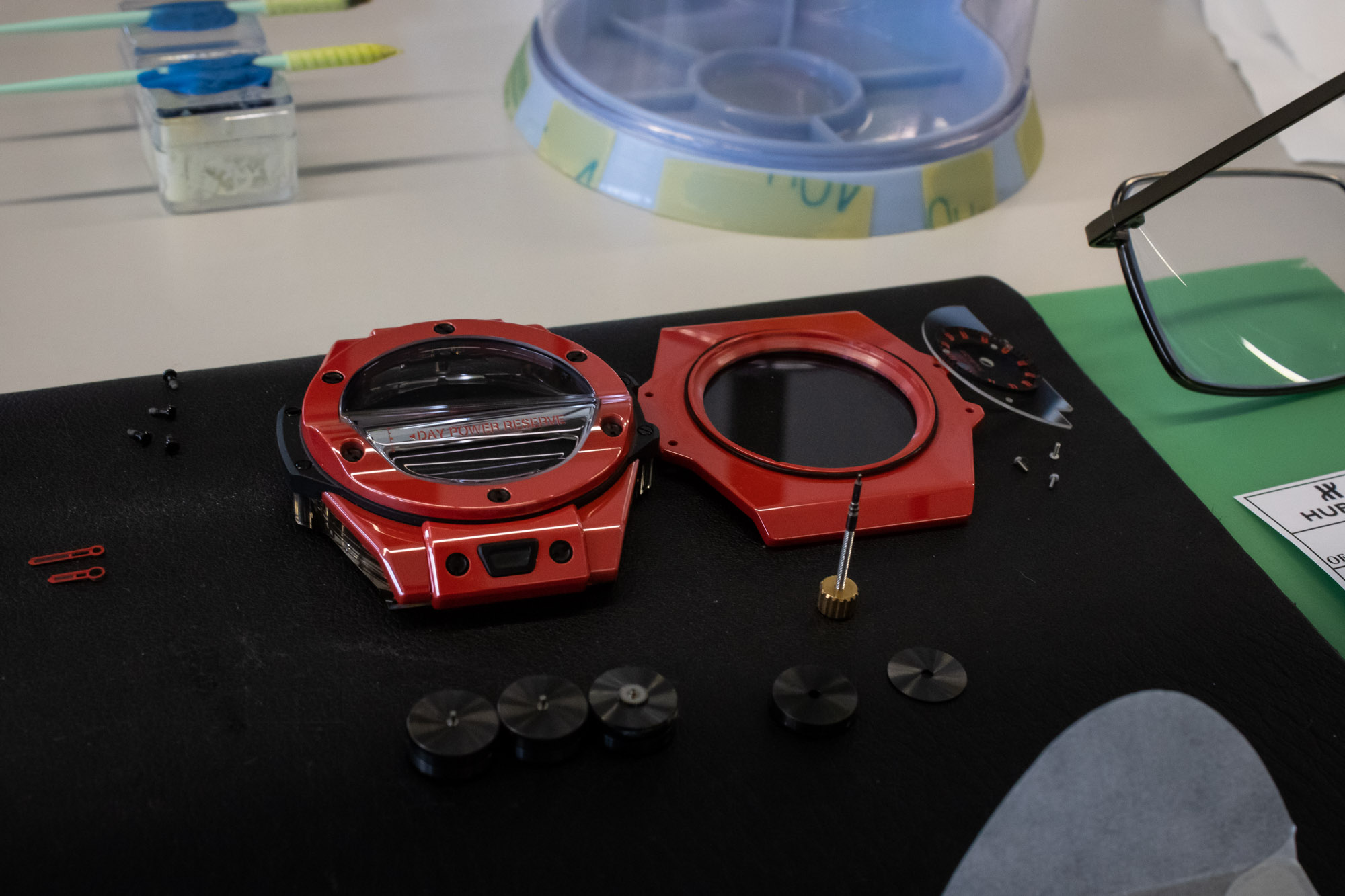
One of the key breakthroughs to Hublot’s colored ceramic technology came purely by chance, when some of the production equipment was accidentally left on after the staff had gone home for the day. While simply leaving the machines on for significantly longer periods of time was hardly the complete solution, it did provide insight into one critical piece of the puzzle, which then sent Hublot’s engineers down a completely different path towards how they would go about achieving a brightly colored ceramic material while still being able to maintain complete control of its color. Although Hublot’s colored ceramic appears to be a perfectly homogeneous and saturated color, it is actually what could best be described as a highly porous and ultra-hard uncolored ceramic structure that has tiny pieces of pigment embedded everywhere inside it.
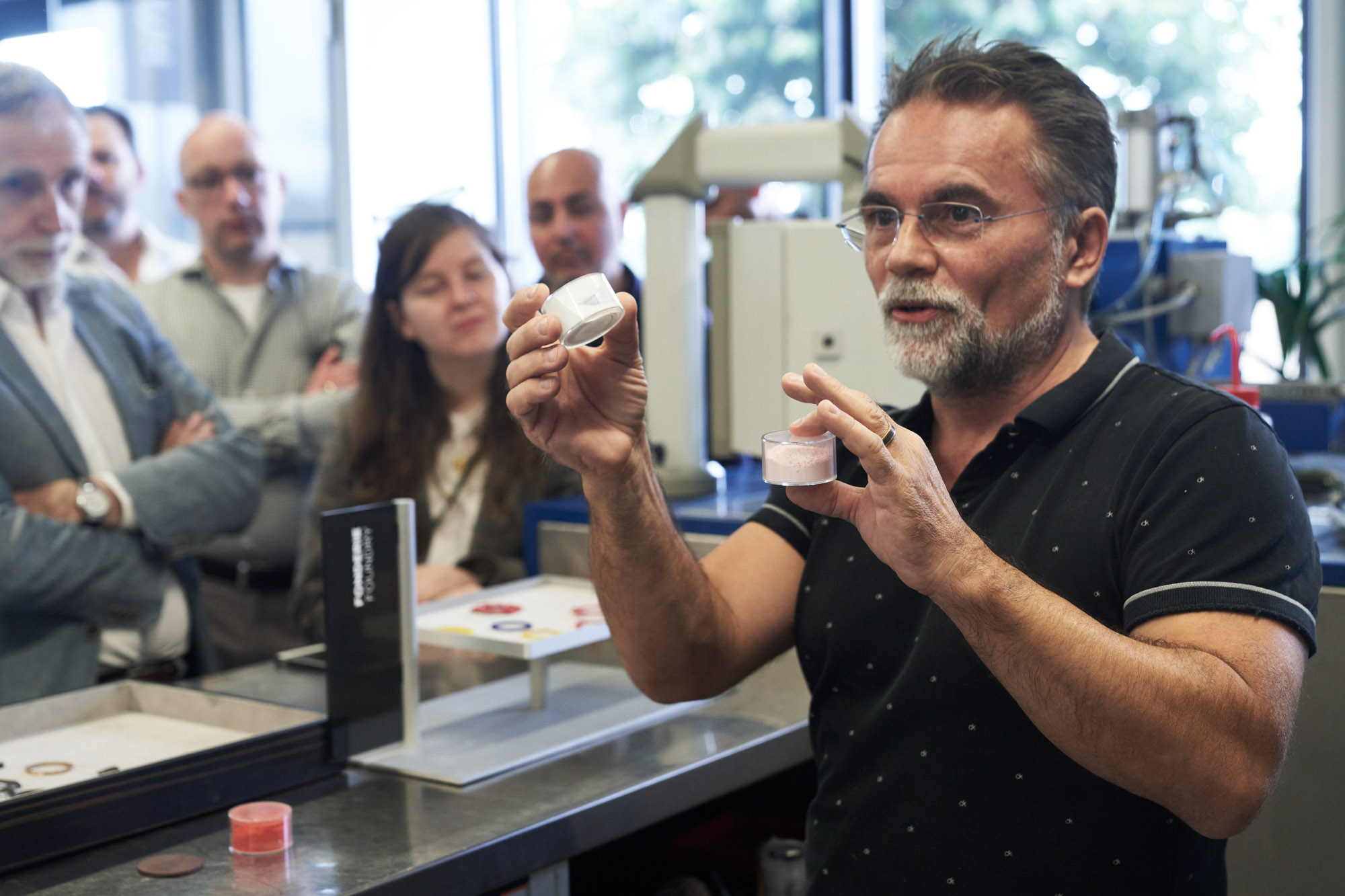
During the factory tour, the example that Hublot’s team used to describe its colored ceramic is that the core concept behind it can be seen as somewhat similar to how our eyes perceive an object like a soccer goal and the net that forms it. Technically speaking, the net itself is white; however, when just looking at the goal as a complete object, it largely appears as whatever color is in the background behind it. Instead of just being a single piece of net, imagine an entire structure of incredibly tiny, densely packed, and interlocked nets, where instead of having just air between the net material, pigment fills all of the tiny imperceptible spaces between each individual net fiber. In the same way that the nets themselves remain white, it is not the actual ceramic that is whatever vibrant color our eyes perceive, as that specific material itself remains uncolored. However, the end result is a completely solid ceramic structure that our eyes perceive as being more-or-less the exact color of the pigment used in the production process.
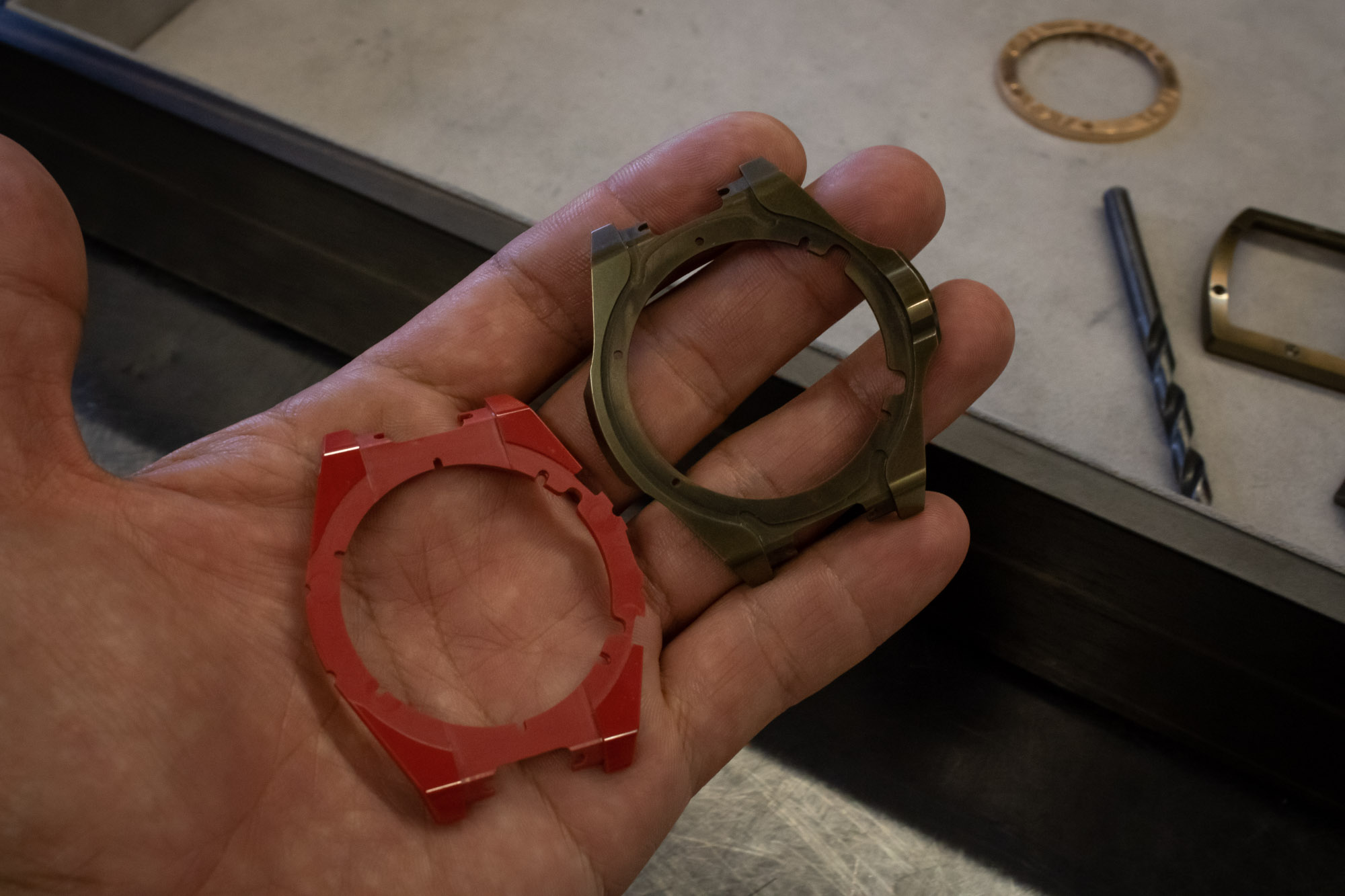
While this manufacturing approach allows Hublot to achieve remarkably rich colors of ceramic in highly specific hues that would otherwise not be possible, arguably the single greatest advantage of this production method is that it can more easily be adapted to work with other types of pigments, and this allows Hublot to produce its ultra-hard ceramic in a wide variety of different colors. Although the brand’s technical team admits that achieving a repeatable and perfected production process will still always require a certain amount of experimentation and refinement for each new color, this manufacturing approach does mean that (at least in theory) any color of ceramic is possible, along with a wide range of other potential possibilities.
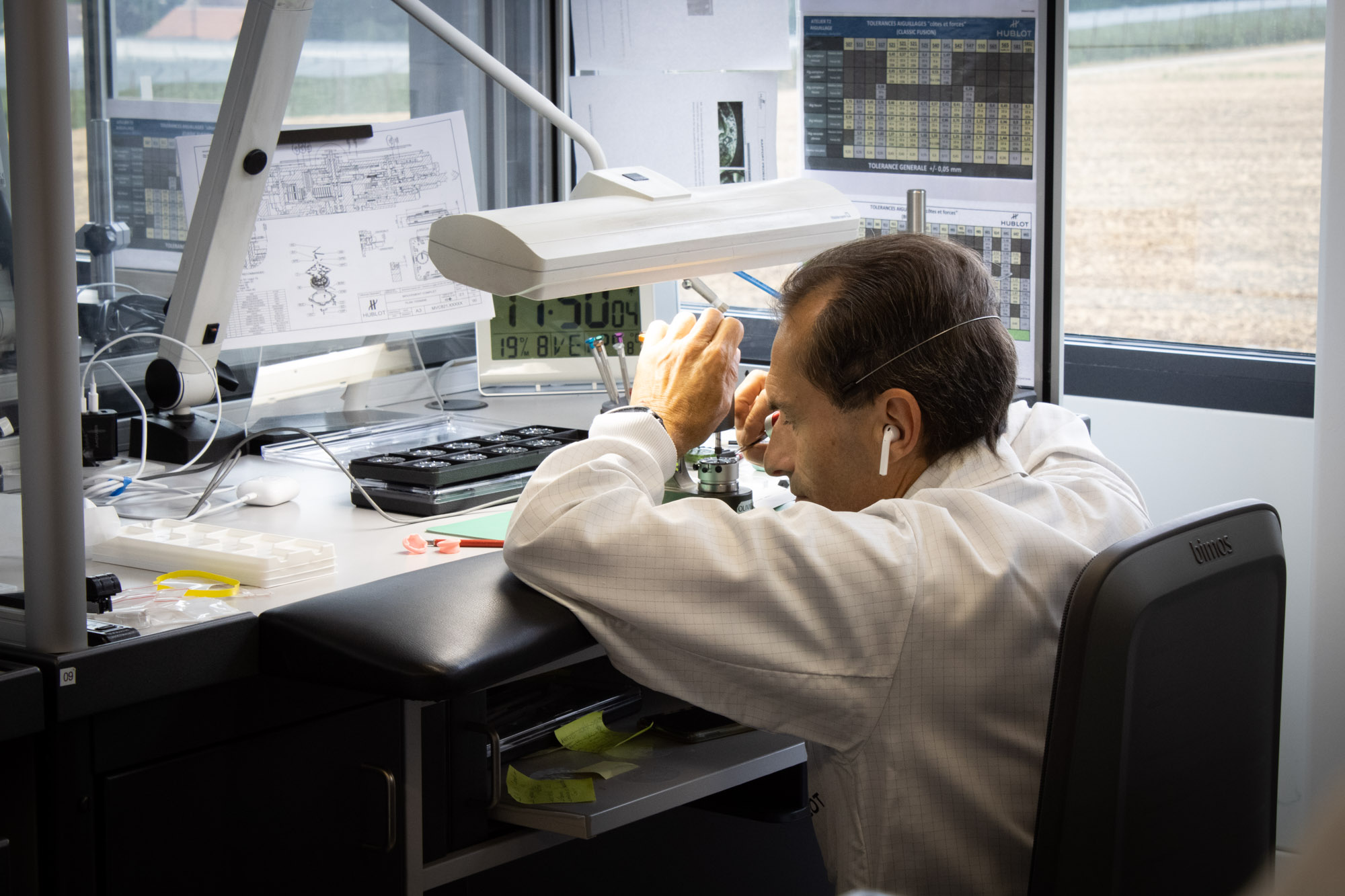
As for Hublot’s “Magic Gold” alloy, ceramic again plays a central role, but this time it is used to produce a proprietary type of 18 karat gold that offers unparalleled scratch resistance with a dark and smoky color that almost looks like the black-colored patina on antique brass. To create Magic Gold, Hublot first uses extreme heat and pressure to create a black microporous ceramic structure that looks more or less like a matte-black pipe or tube. While this structure looks and feels entirely solid, it actually consists of countless tiny microscopic pores and it is this porous structure that gives the material its matte appearance. During the presentation, acetone was poured onto the ceramic tube and the liquid immediately sank into its surface and disappeared, yet you can also knock the tube on the table and it feels completely solid when touched.
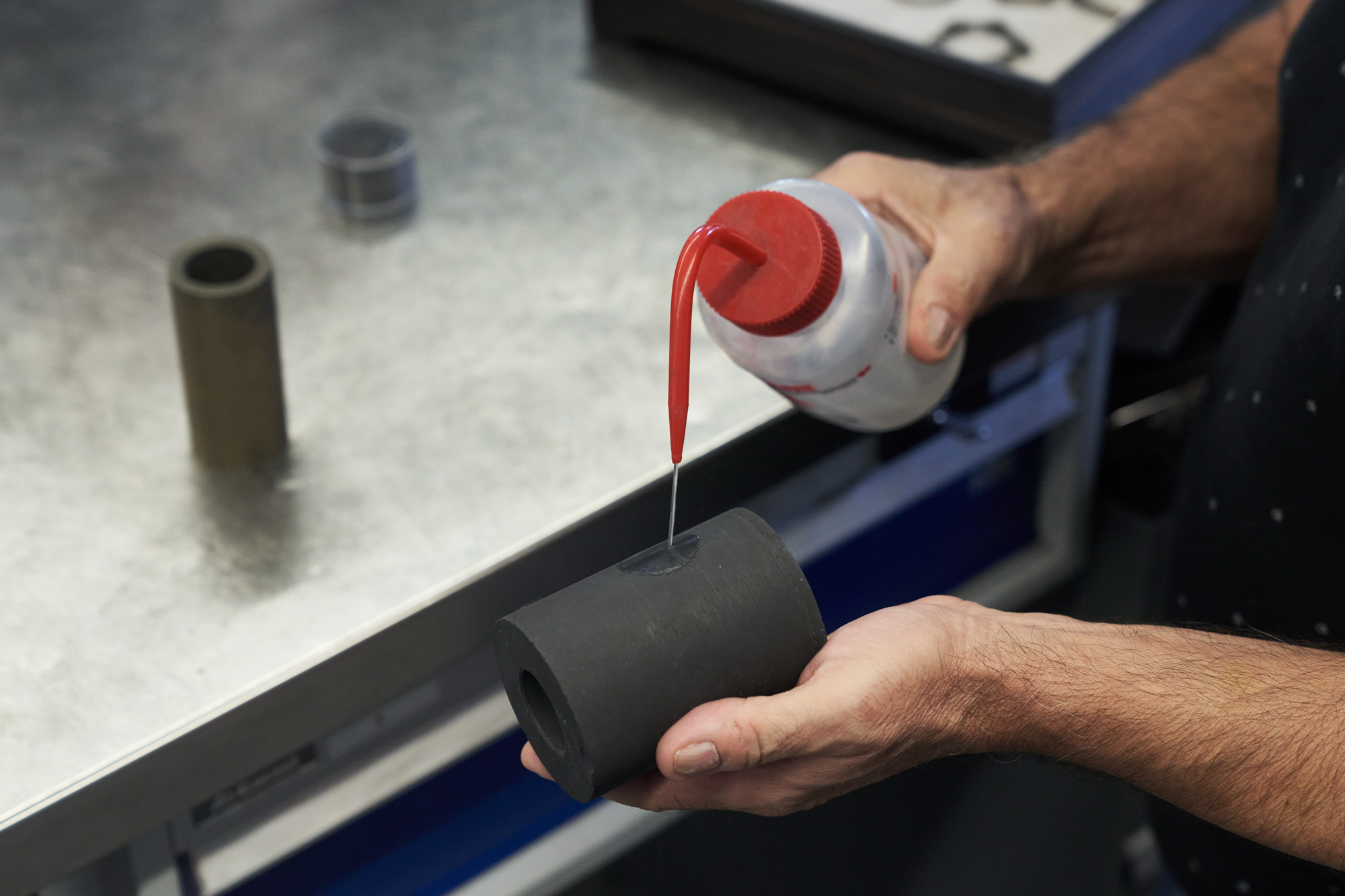
From here, the black microporous ceramic tube that was created during the first stage of the production process is combined with pure gold under an incredible amount of heat and pressure. This infuses the ceramic structure with molten gold, filling all of its tiny micropores and creating a completely solid metallic object. By weight, the resulting material ends up being at least 75% pure gold, meaning that it qualifies as being true 18 karat. However, the ceramic structure that serves as its core makes it highly scratch resistant and gives the material a surface hardness rating of almost 1,000 vickers, compared to the 600 vickers offered by traditional stainless steel. To call Magic Gold entirely “scratch-proof” wouldn’t quite be accurate because you could still scratch it with certain incredibly hard objects like a diamond. However, the fact that you could toss a Hublot watch made from Magic Gold into a bag with your car keys and it would come out entirely unscathed is saying a lot, especially considering that the watch is still technically made from 18k gold, which has historically been a notoriously soft substance.
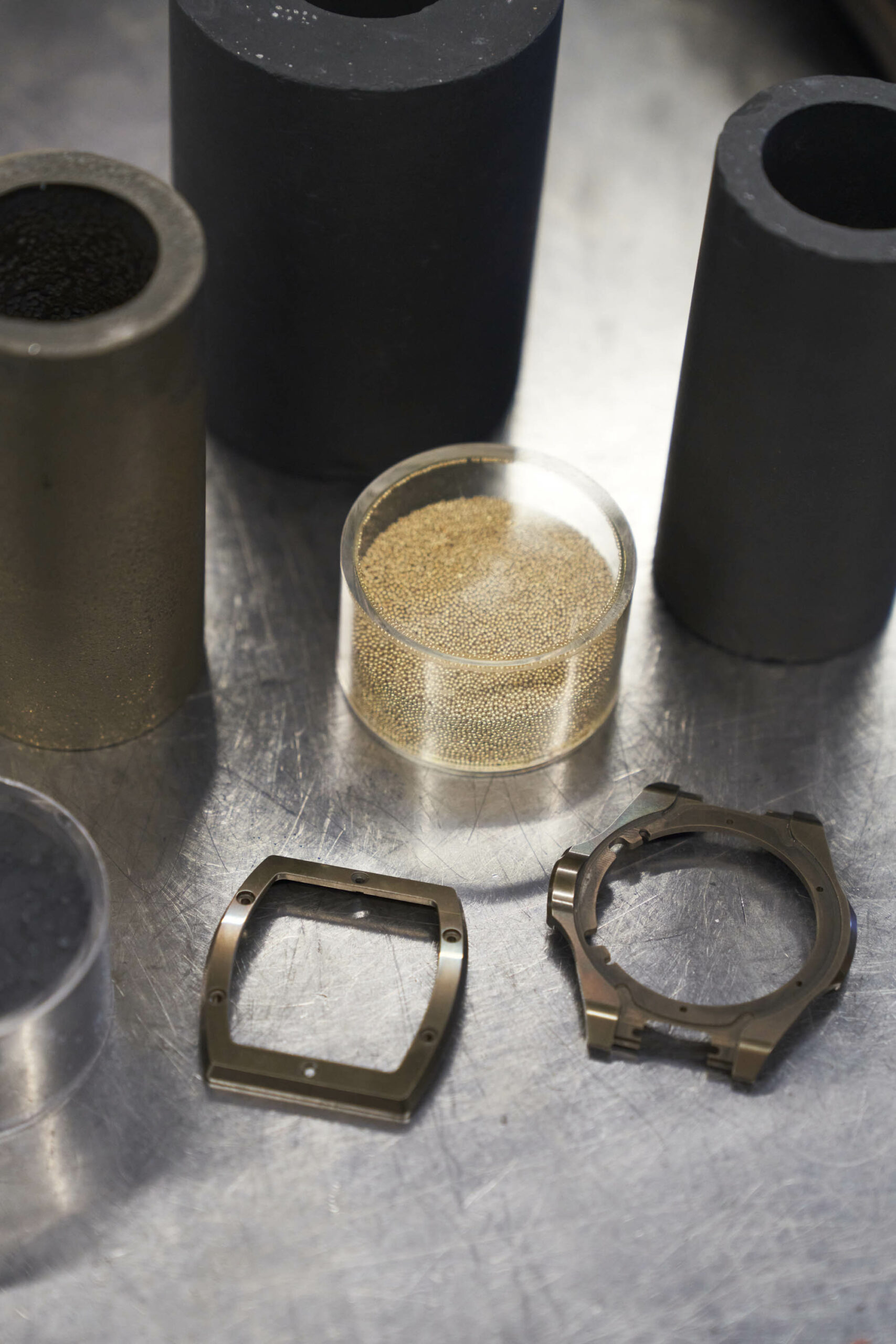
The only real drawback of Hublot’s Magic Gold is that it doesn’t quite look like traditional yellow gold and it doesn’t offer the same brilliant luster. However, if you are buying a statement piece made from a proprietary gold alloy that is virtually impossible to scratch, having it look different than your average 18k gold watch isn’t necessarily a bad thing at all. Additionally, despite the significantly more involved production process and the fact that Hublot can only make a handful of Magic Gold watches each month, the brand doesn’t charge a premium for one of its Magic Gold models compared to an otherwise identical watch that is crafted from traditional 18k gold. As Hublot explained it, the material itself is still 18k gold, so the price should be the same, despite the fact that it requires a more complex production process and features highly scratch-resistant properties. Given the retail prices of solid gold Hublot watches, I’m sure the additional production costs associated with Magic Gold are already more than covered, but it’s still nice to see Hublot refrain from adding an arbitrary price premium to this innovative alloy when it could easily get away with charging more for it.
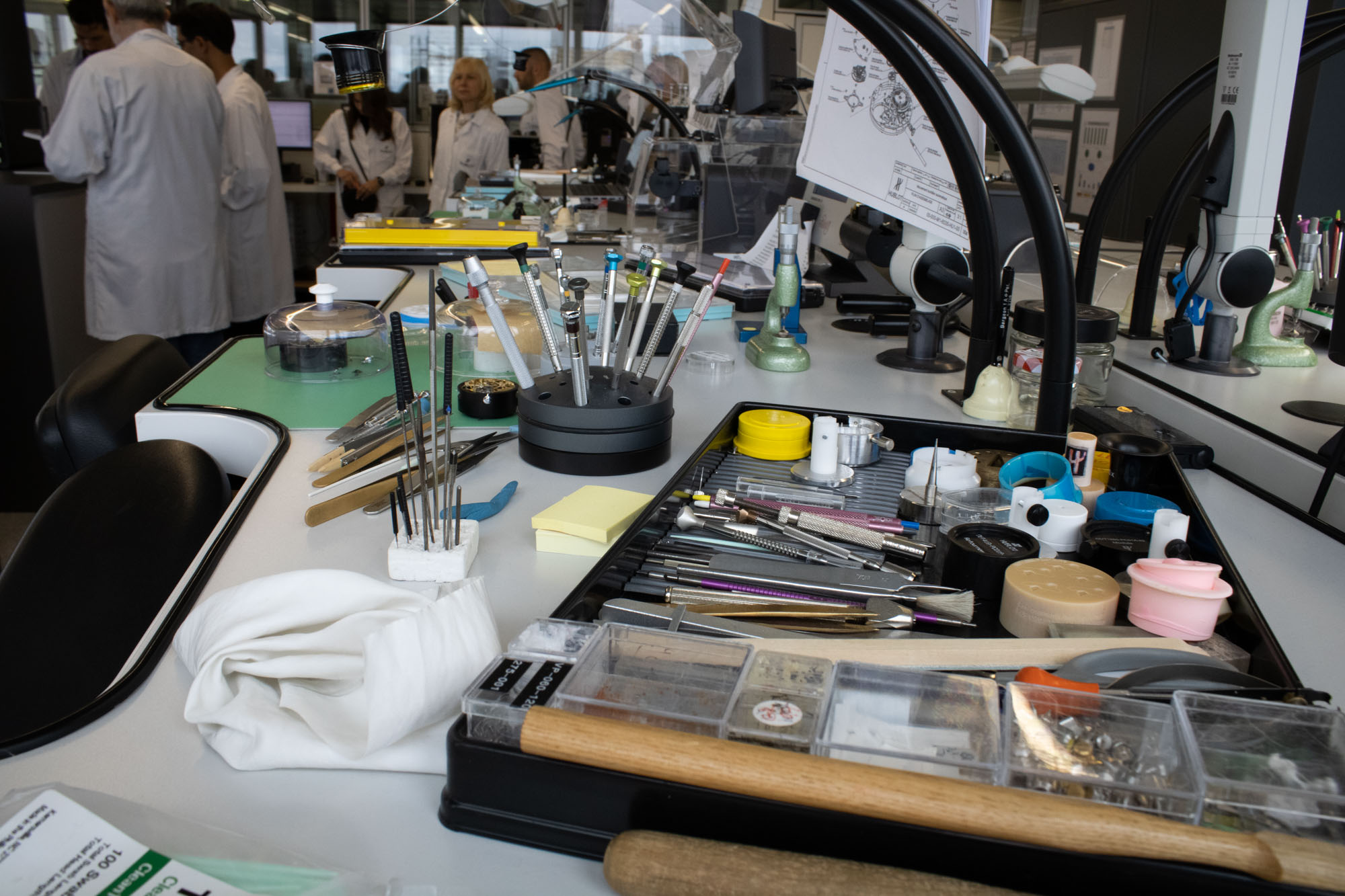
One other thing that becomes clear when touring the Hublot factory is that a significant portion of the brand’s facilities is dedicated to the actual manufacturing of components, rather than just the assembly and finishing of them. Like most proper manufacturers, Hublot’s factory has multiple floors and clean rooms filled with watchmaker workbenches, along with dedicated departments for prototyping, gem-setting, testing, and even marketing. However, a significant portion of Hublot’s second building (which was opened in 2015) is allocated to the production of various components from raw materials, and the entire second floor is filled with rows of machining equipment, humming away and producing small metallic parts in various different shapes and sizes.
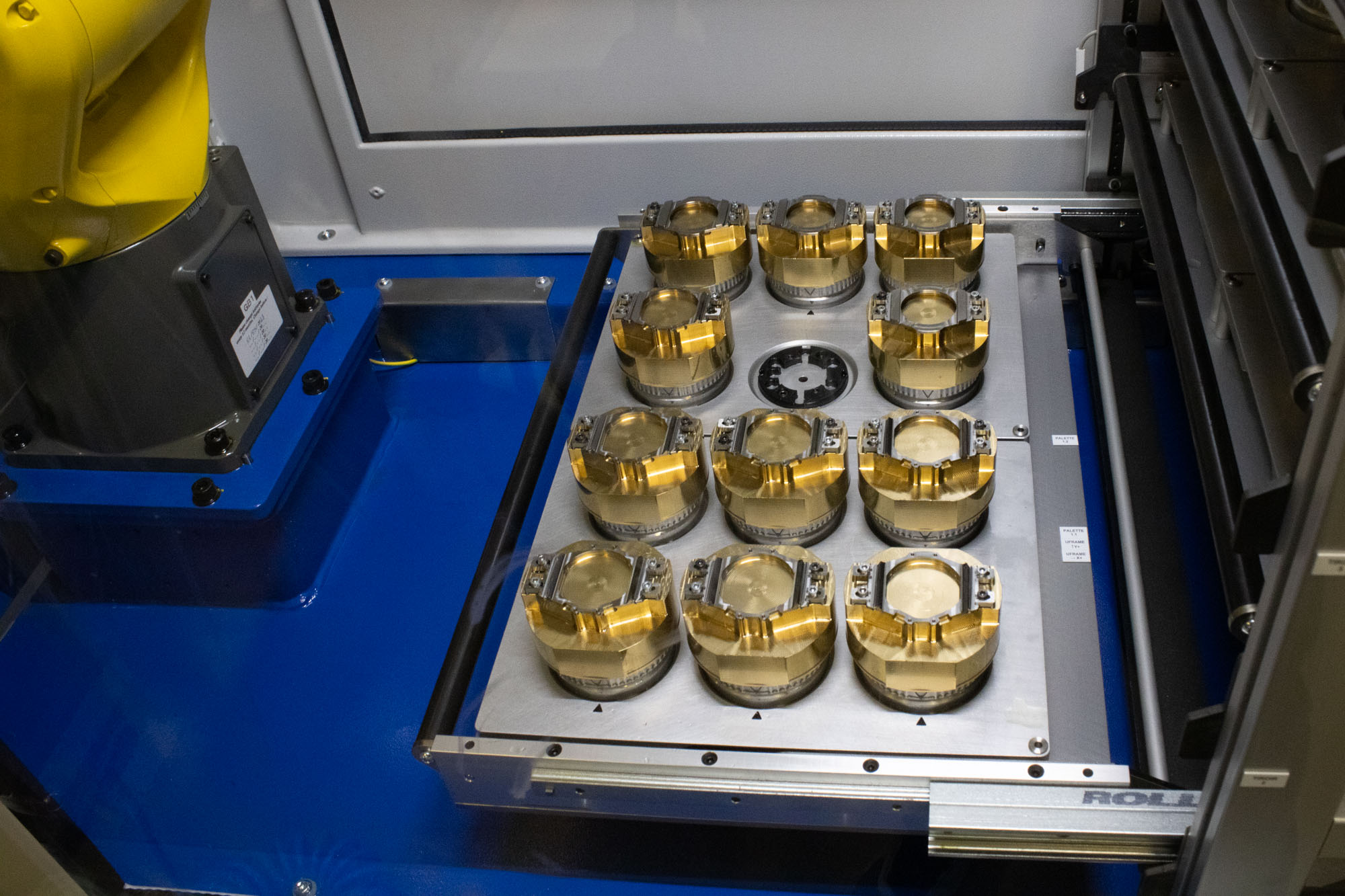
Additionally, despite the countless machines and the massive rooms that are filled with car-sized pieces of equipment, it’s important to stress that there is no automated assembly line at Hublot whatsoever. Each machine produces one small batch of components at a time, or it otherwise performs a finite list of interrelated tasks, and Hublot’s Nyon-based facilities are filled with people moving about, operating equipment, and transporting the various raw materials and partially-finished components from one area to the next. Just as you would expect from any state-of-the-art manufacturing facility that is producing its own proprietary alloys and working within micron-based tolerances, machines play an integral role in the greater operations of Hublot’s factory. However, their primary function is to be used as tools by the people who work there to allow them to create timepieces that would otherwise be impossible, rather than to actually replace the role of humans in any capacity.
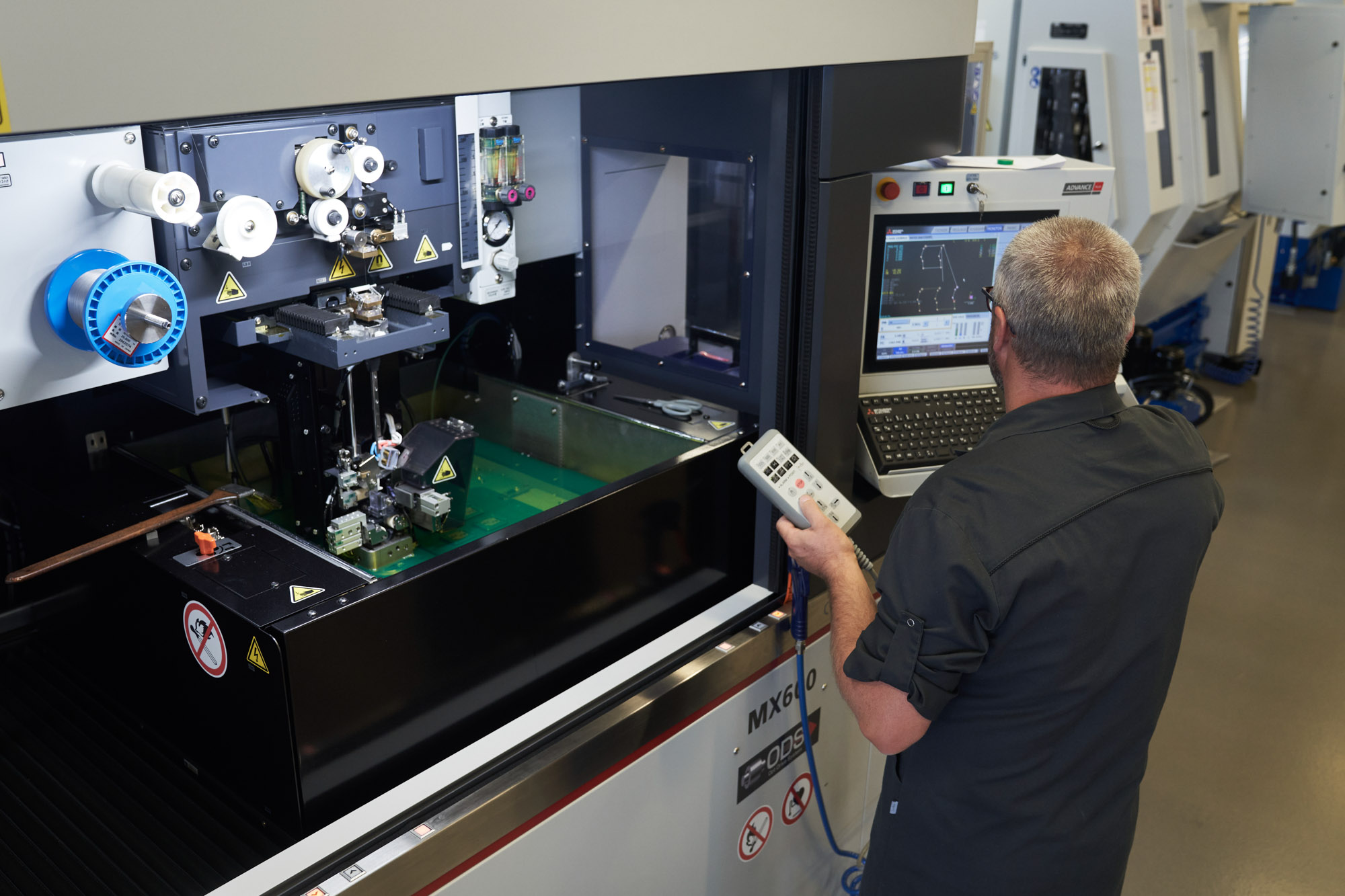
At the end of the day, Hublot has always been a divisive and slightly controversial company. As the first luxury watch manufacturer to combine a precious metal case with a rubber strap, Hublot was never going to be the brand for die-hard purists, and it has never once attempted to be a wristwatch company that catered to the masses. Additionally, if you look at Hublot’s contemporary catalog, it becomes clear that the brand doesn’t try to embody a history or heritage that harkens back to some golden era in which it never even existed. Hublot is a modern luxury watch manufacturer and it isn’t afraid of being one. Without some century-plus history that it feels compelled to honor and maintain, Hublot is free to be itself and create downright fun timepieces that showcase bold designs and highly innovative case materials that you won’t find anywhere else. For more information about Hublot watches, please visit the manufacturer’s website.



